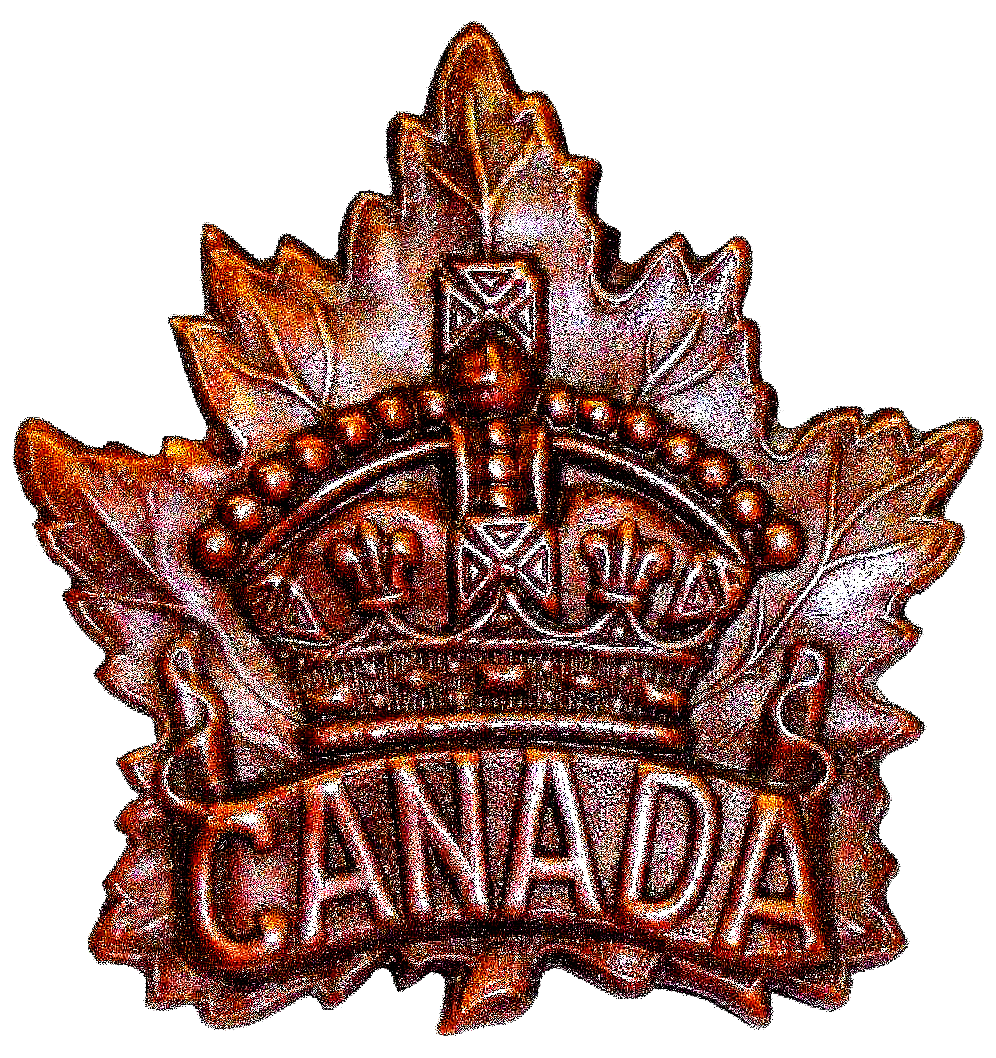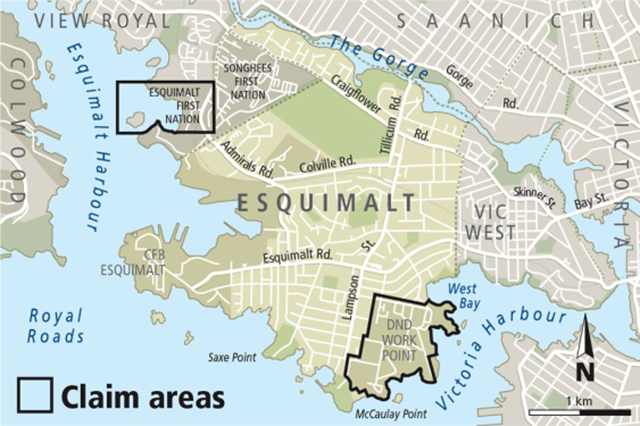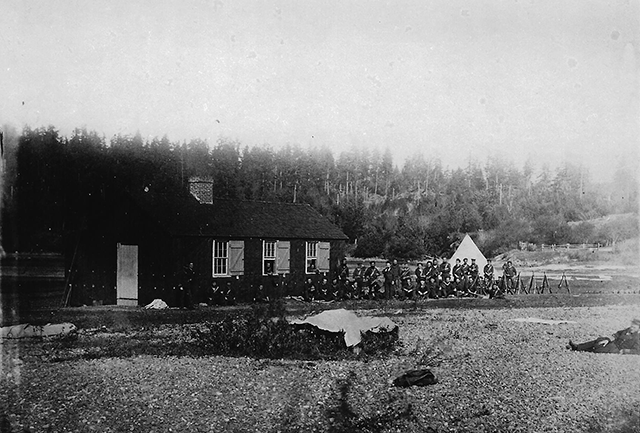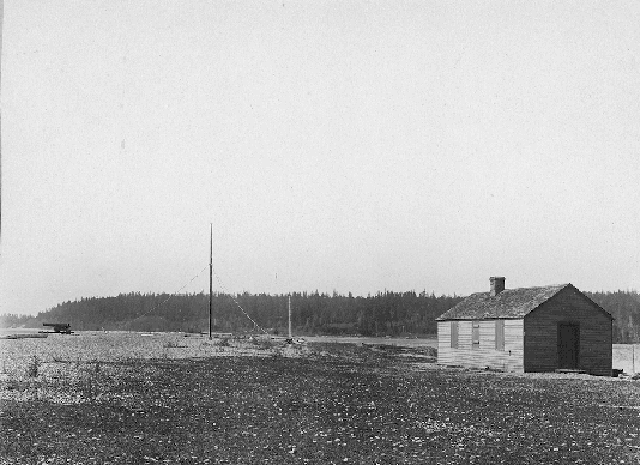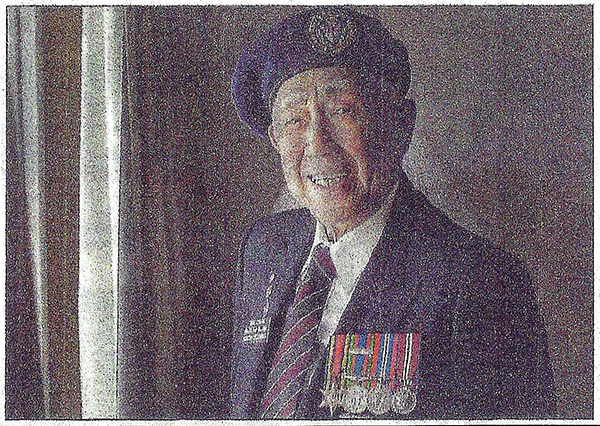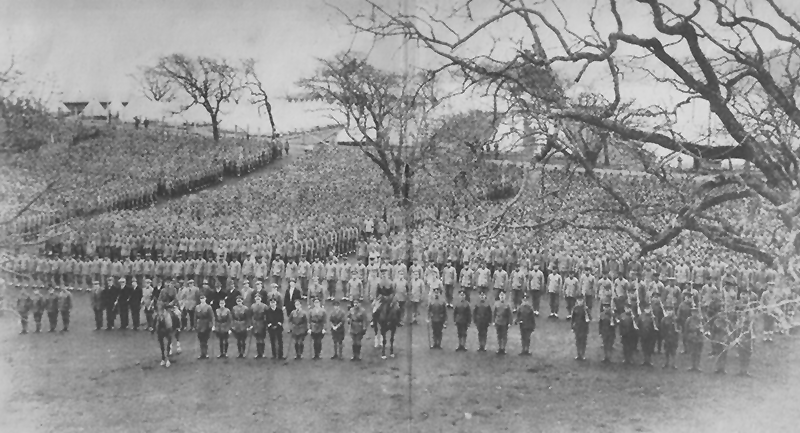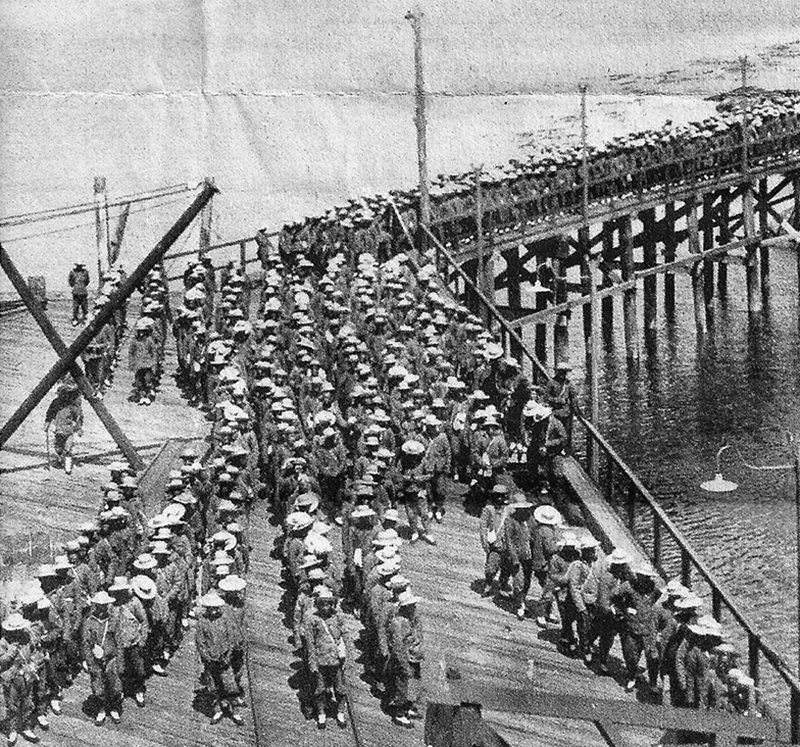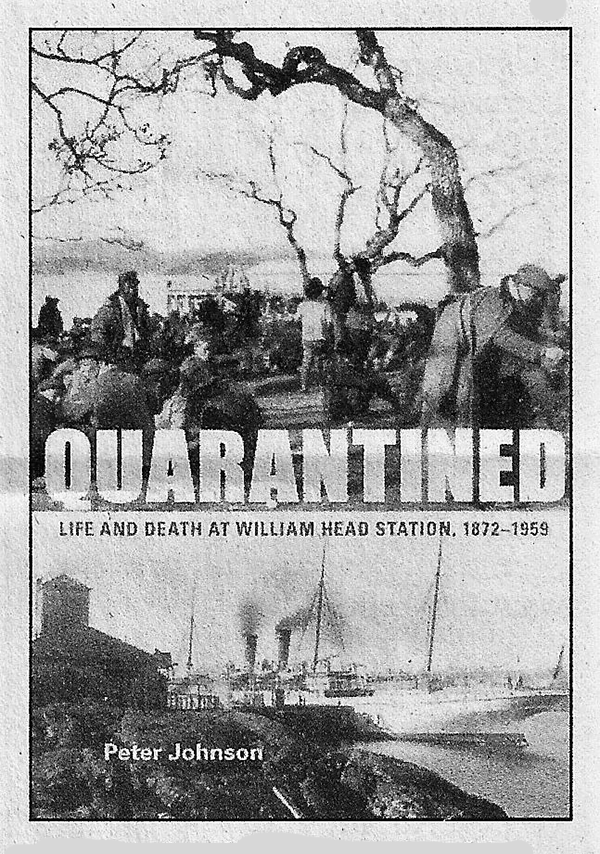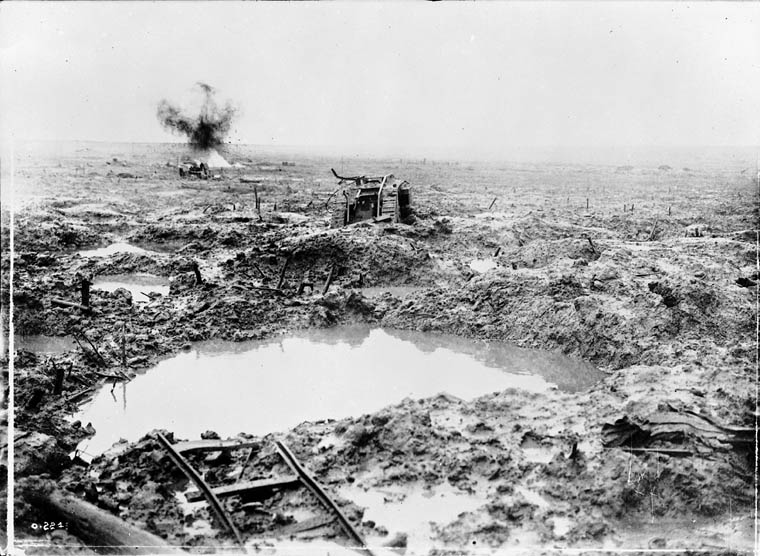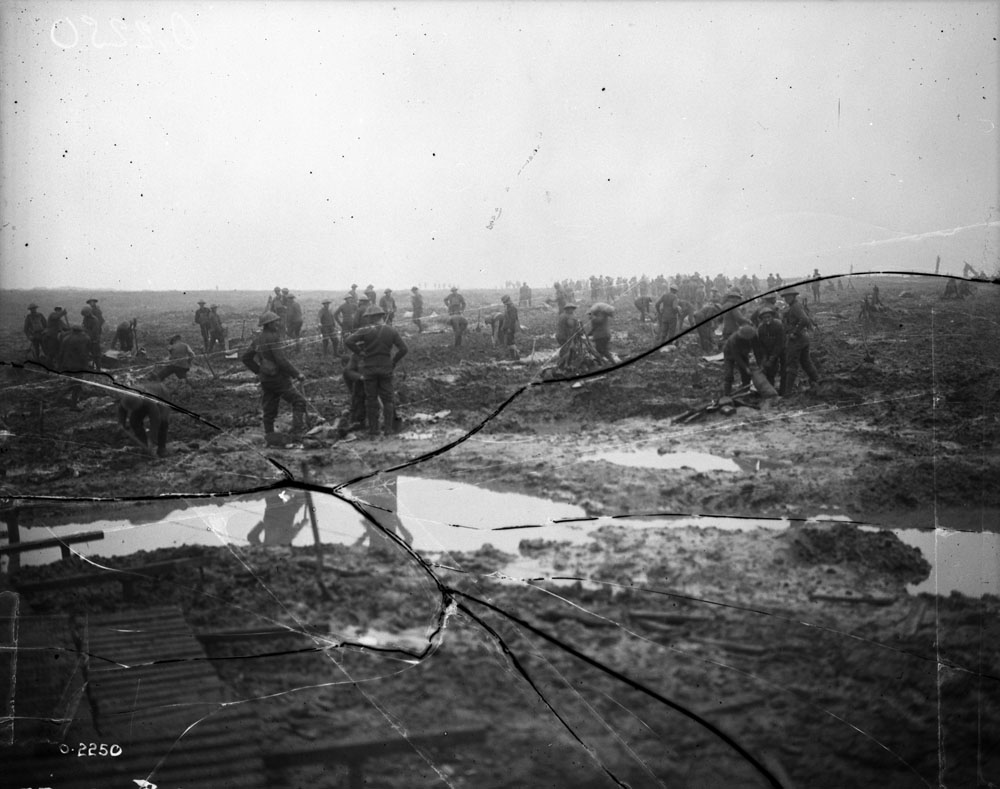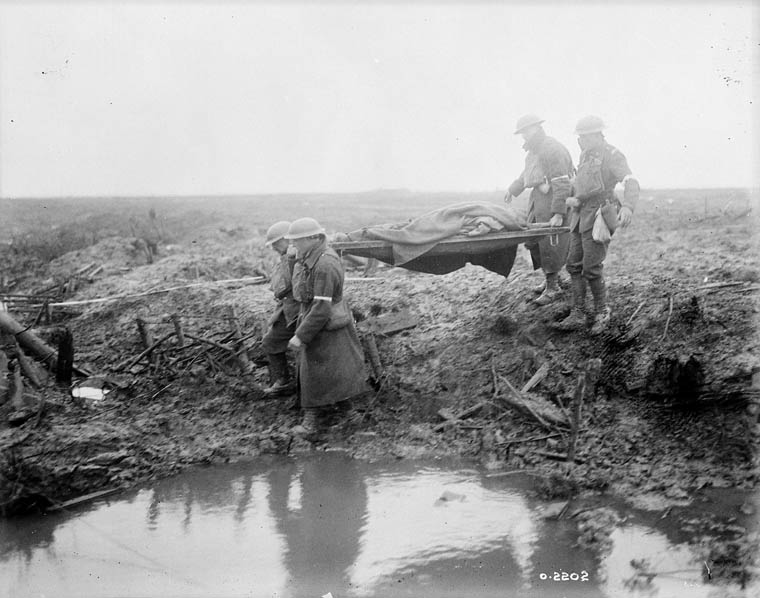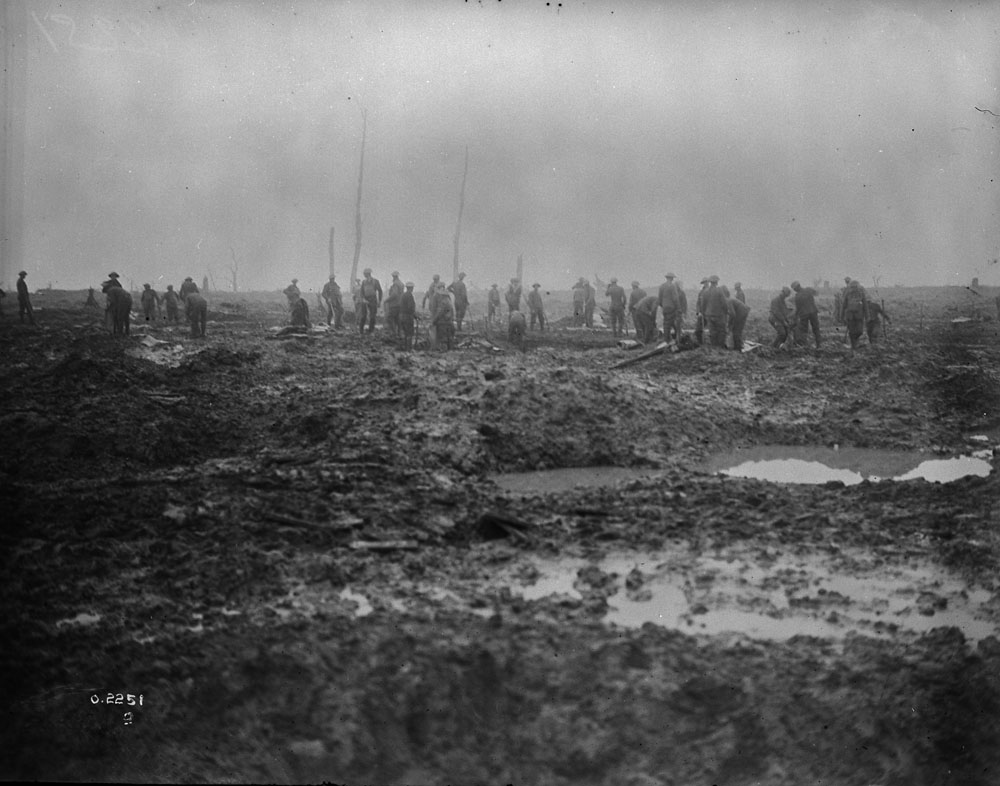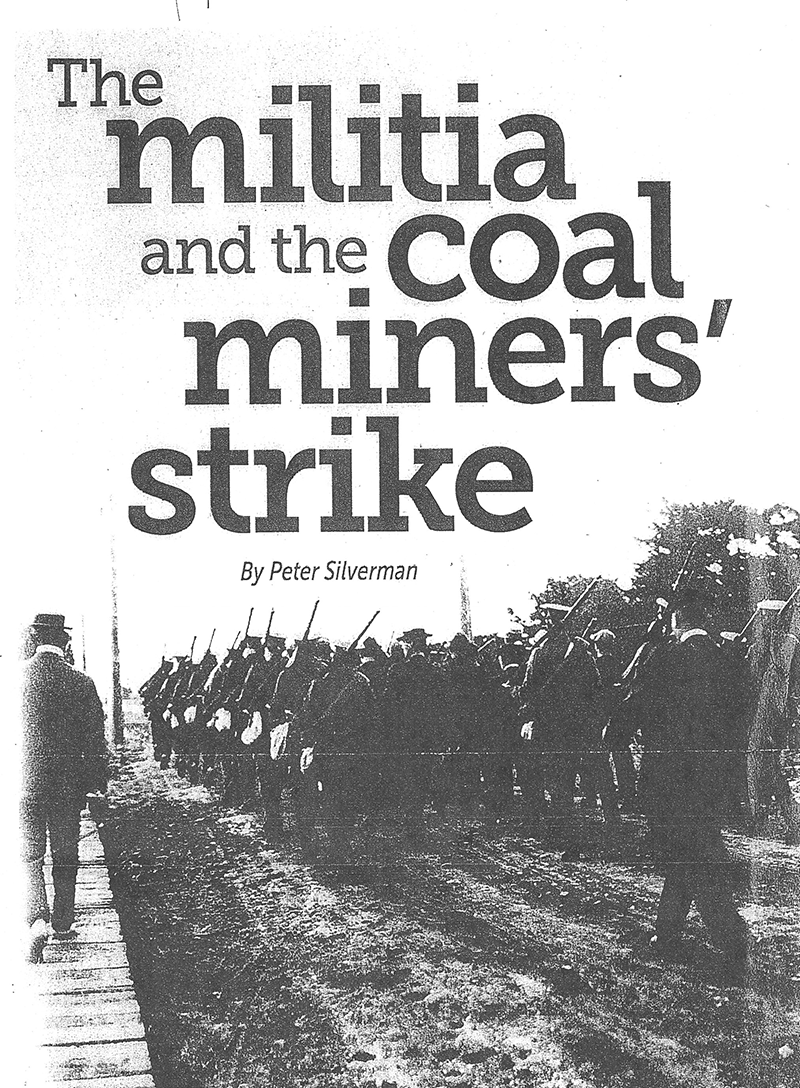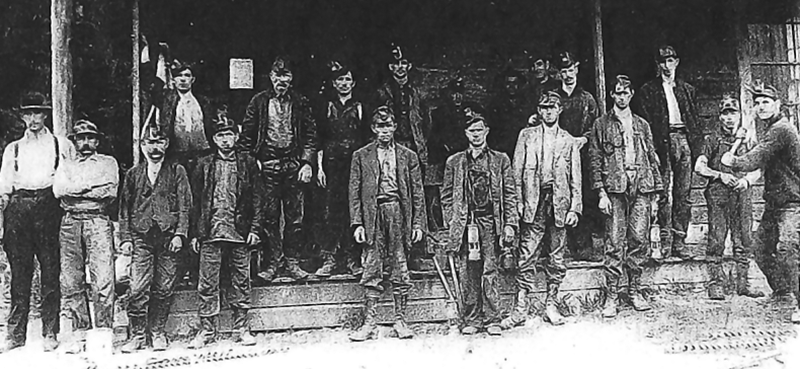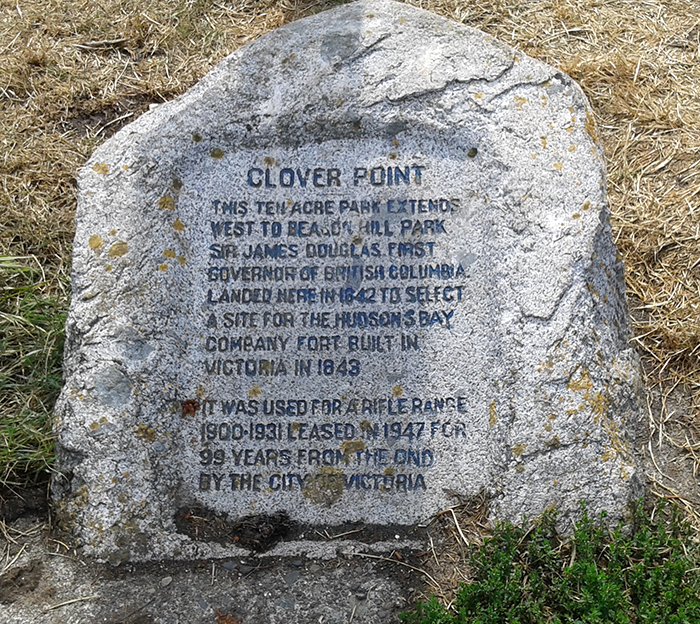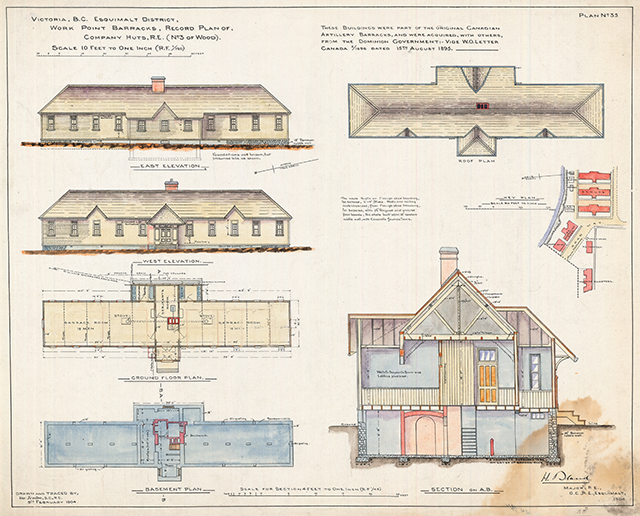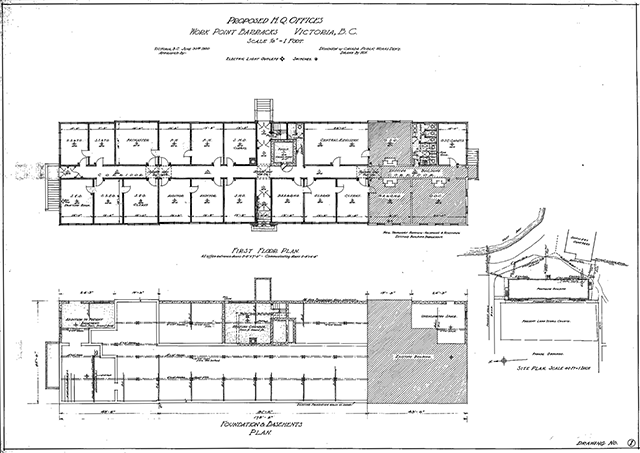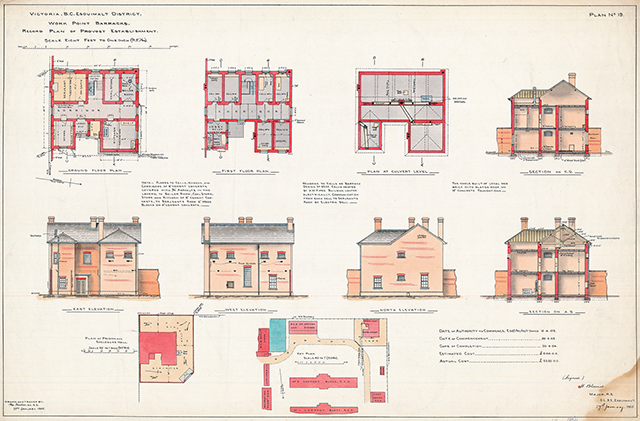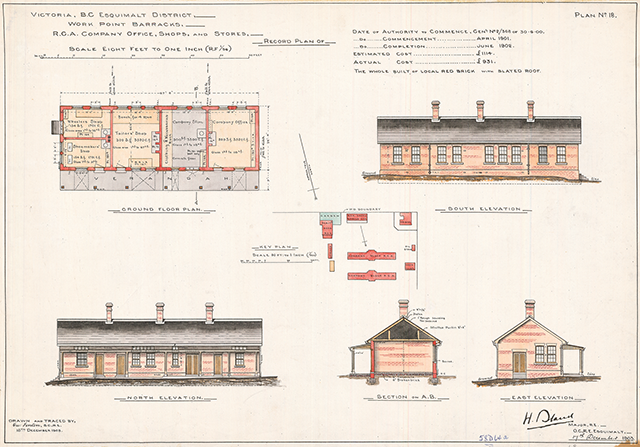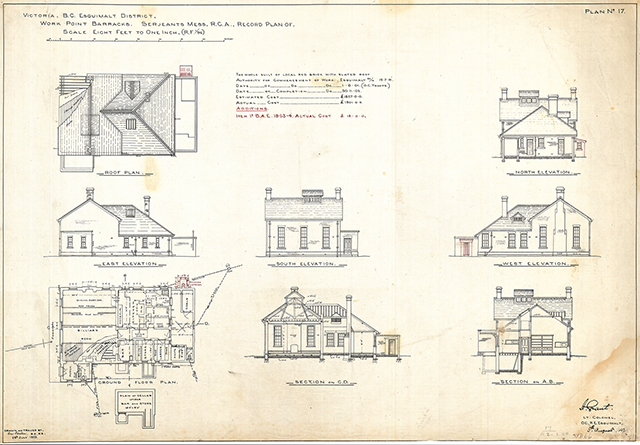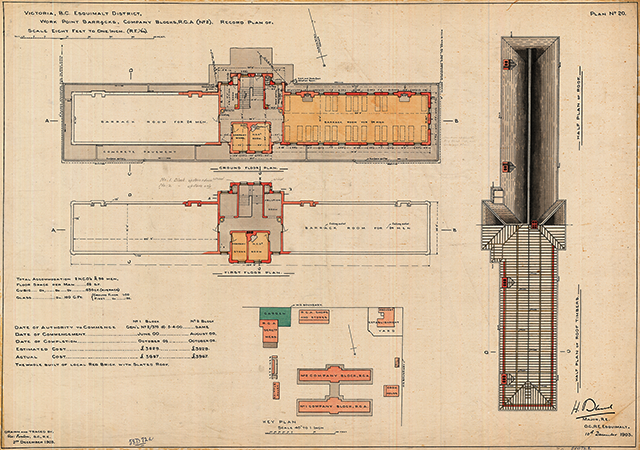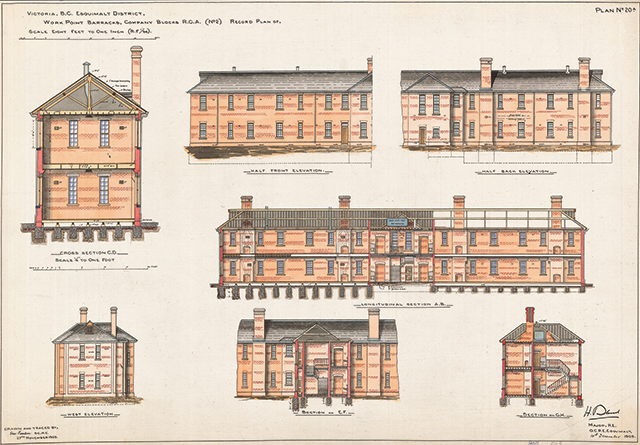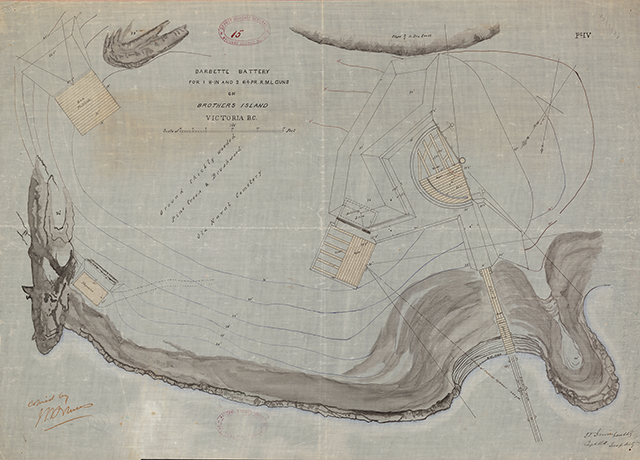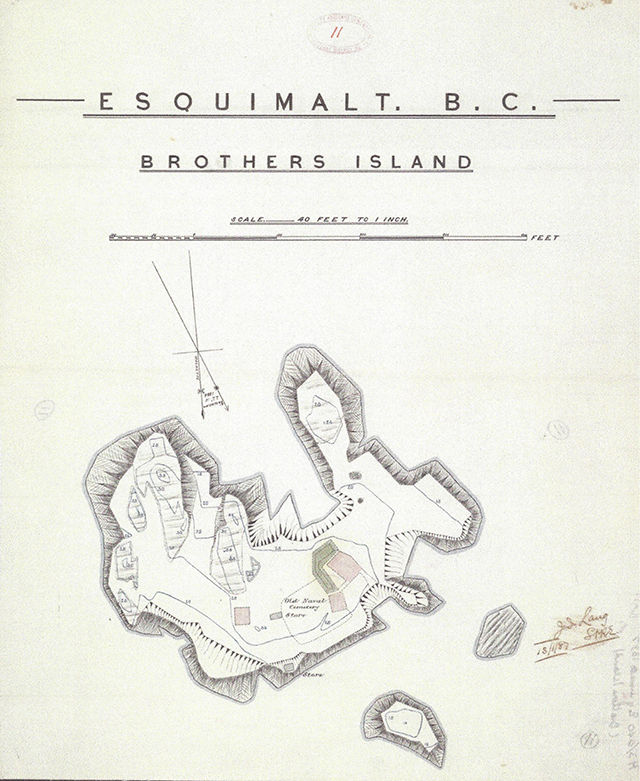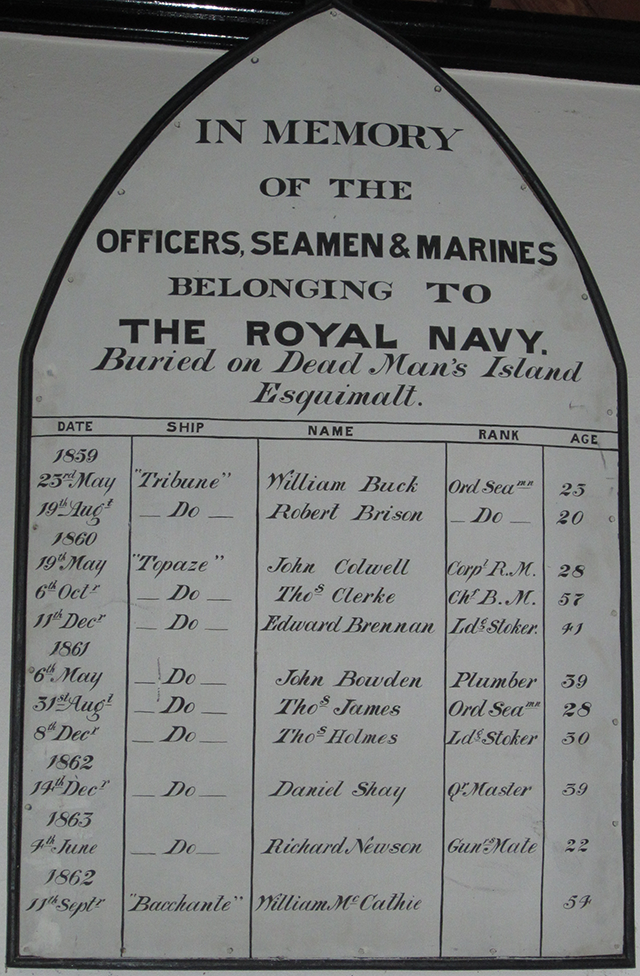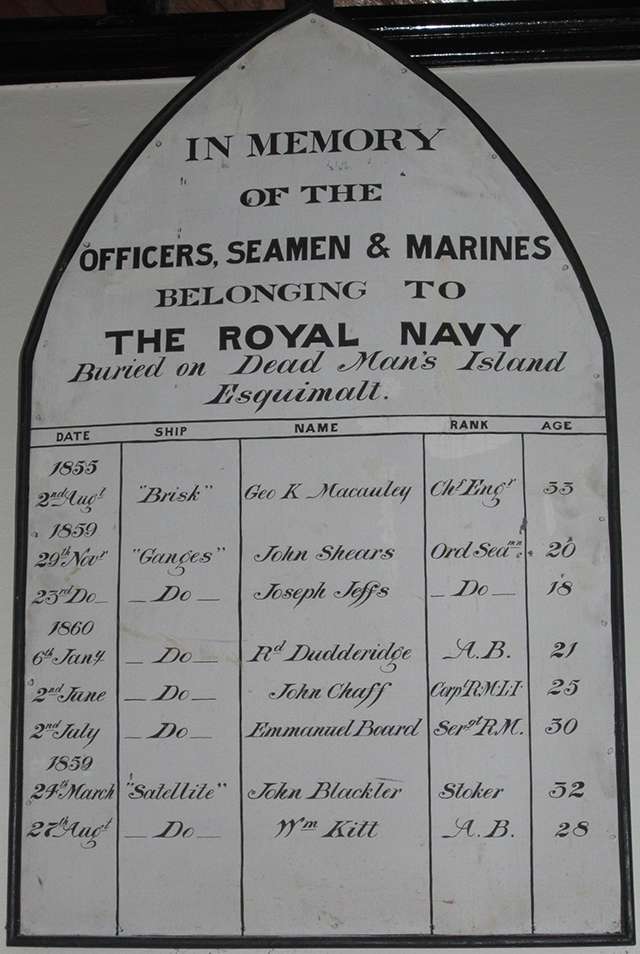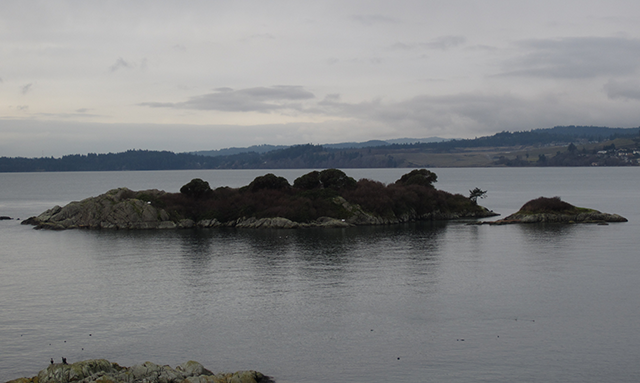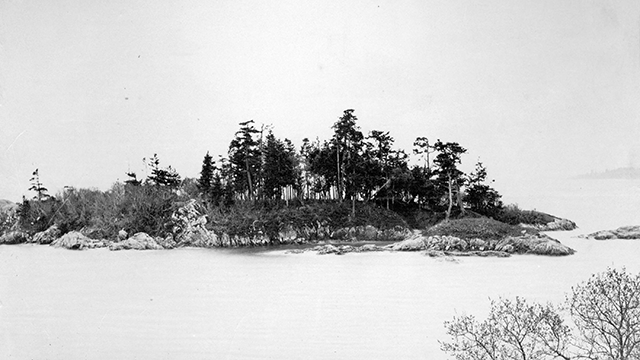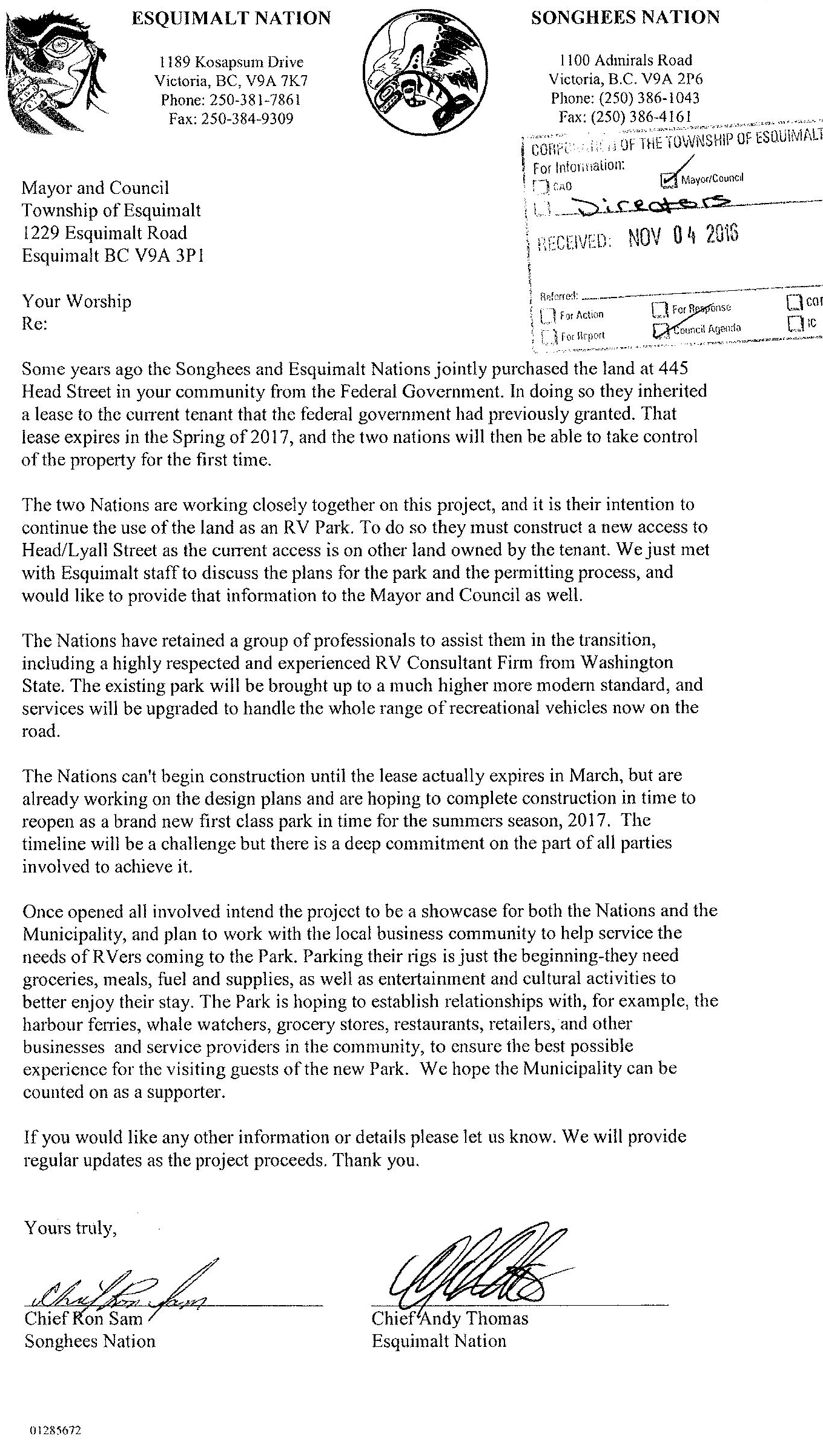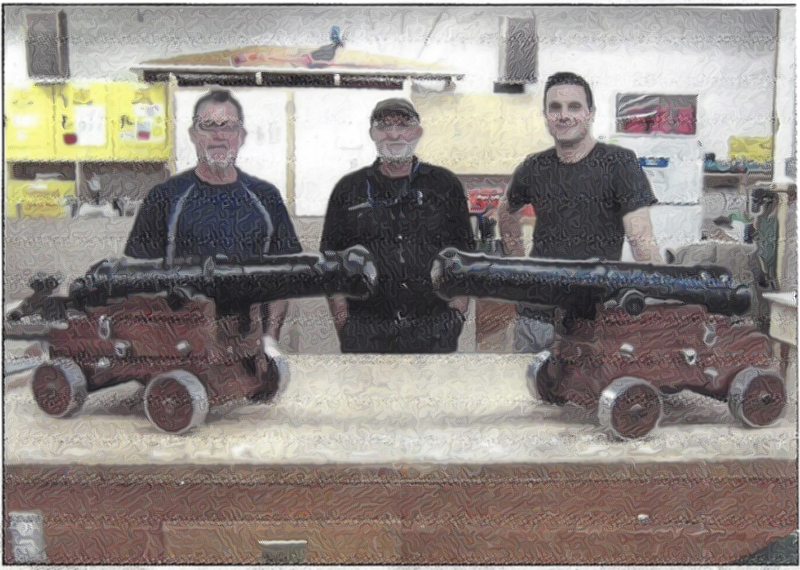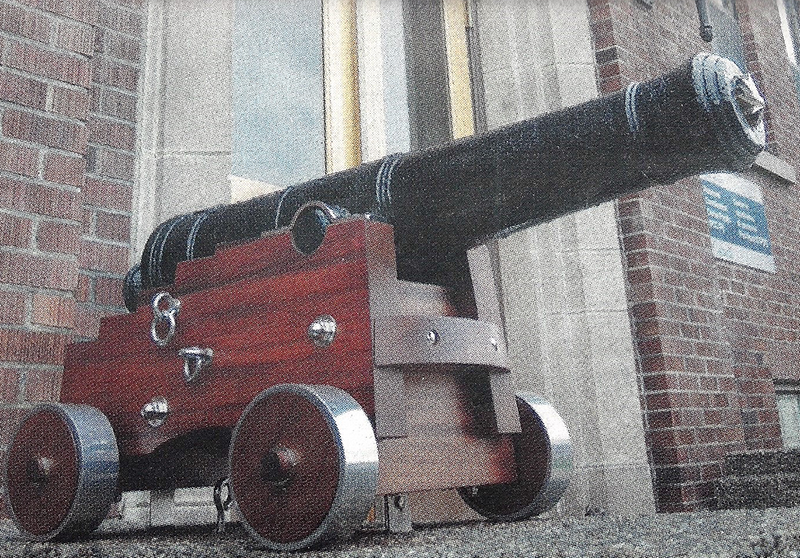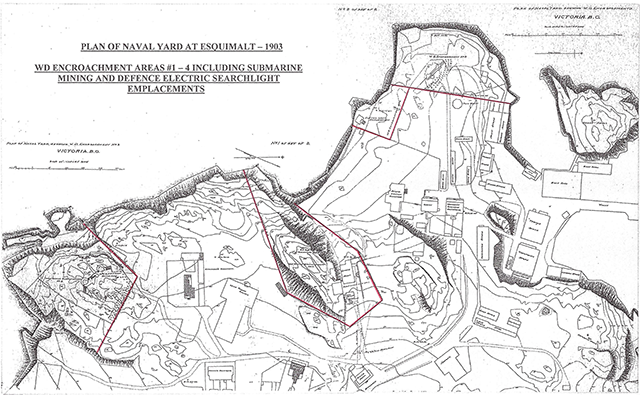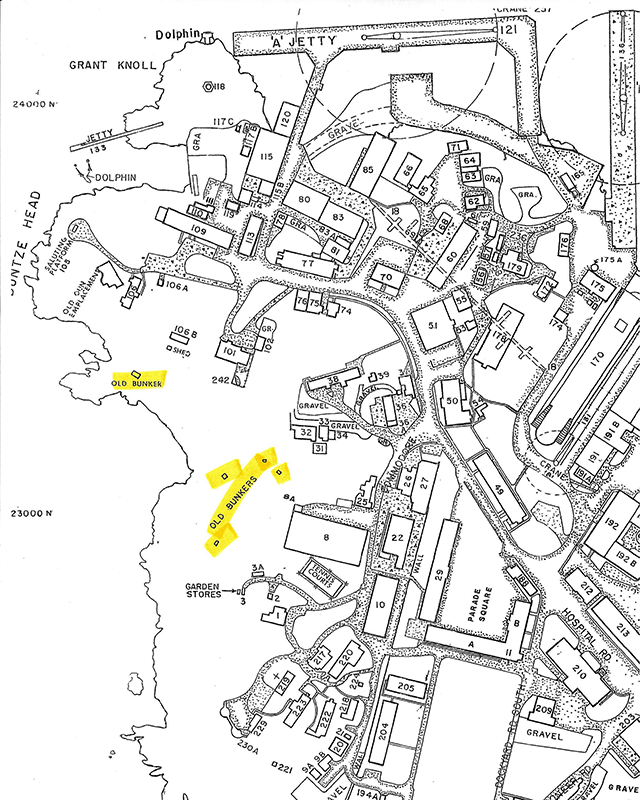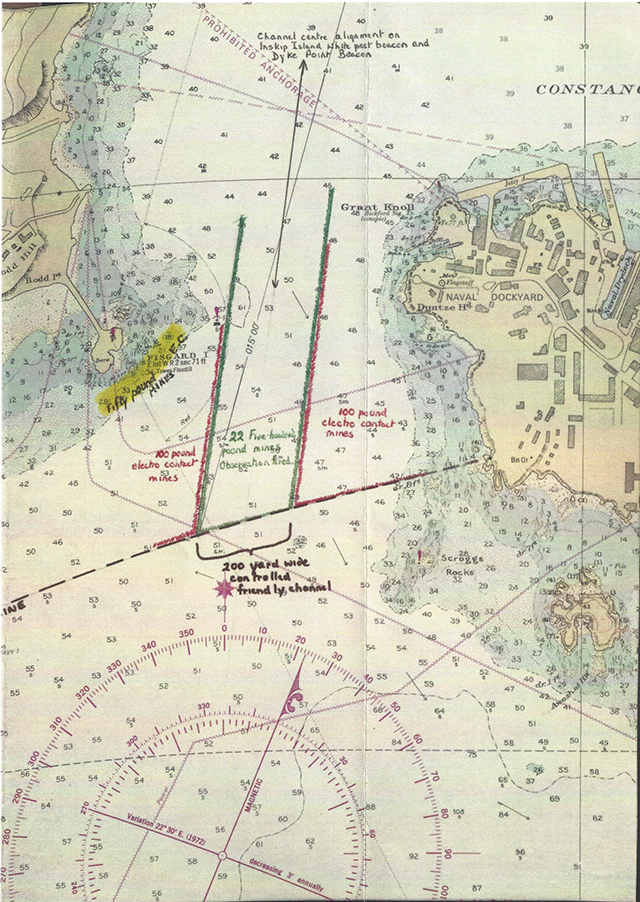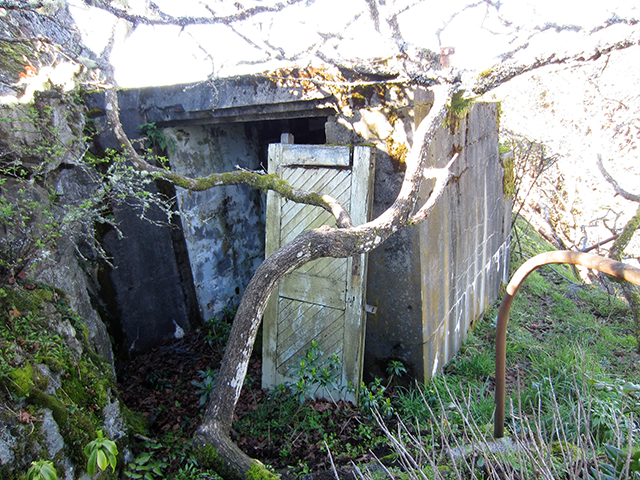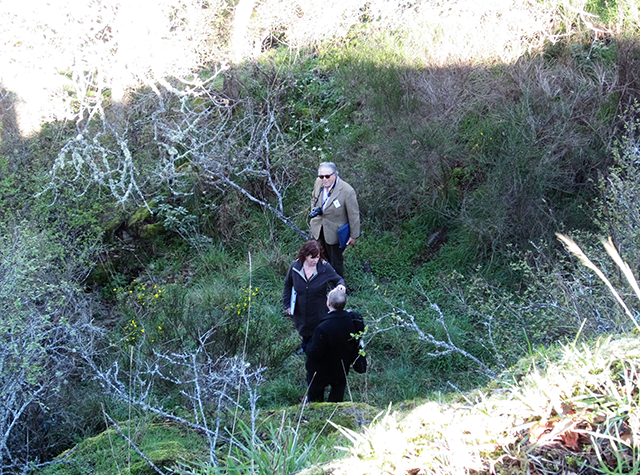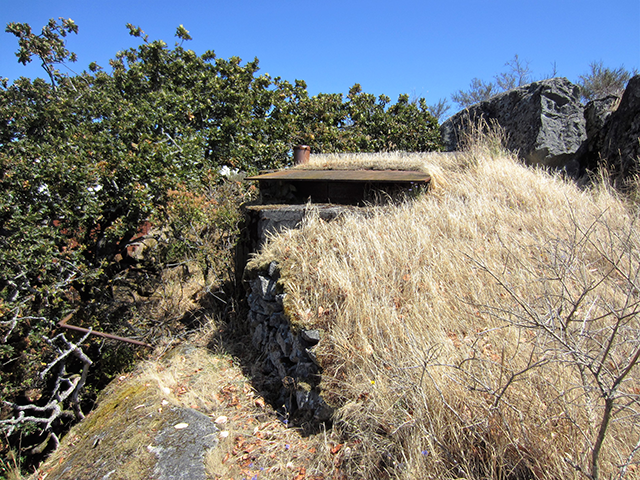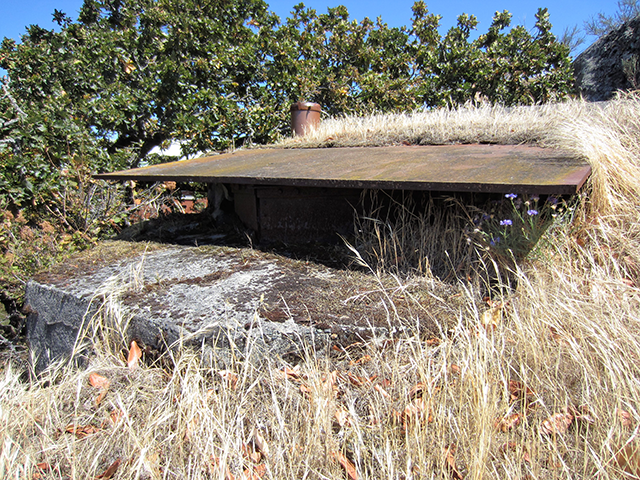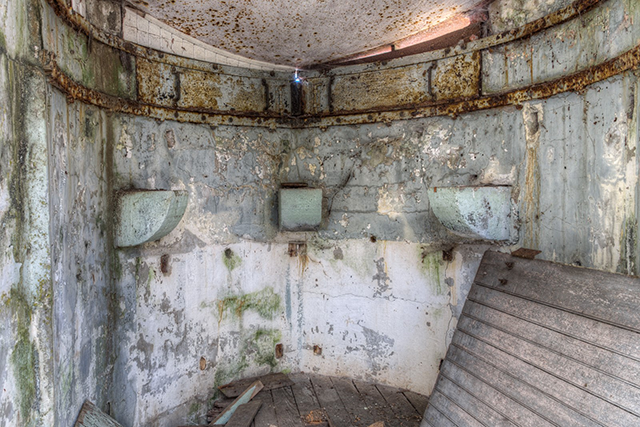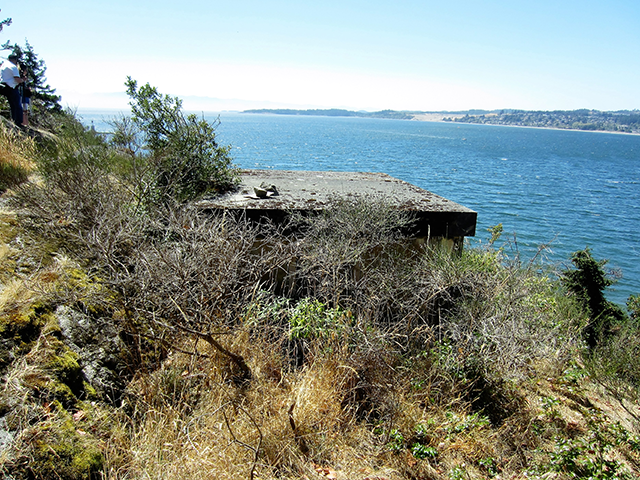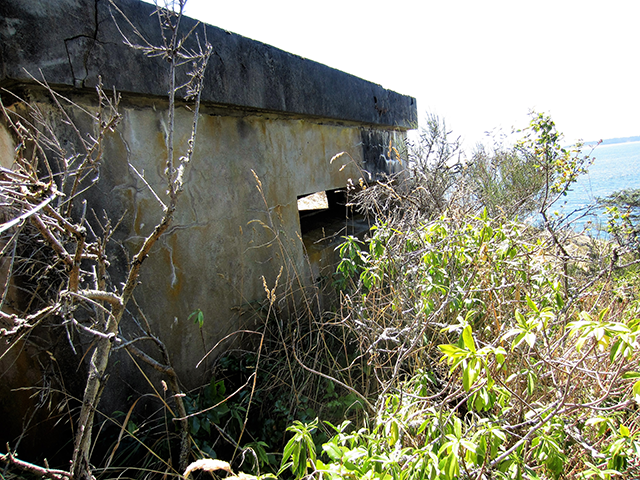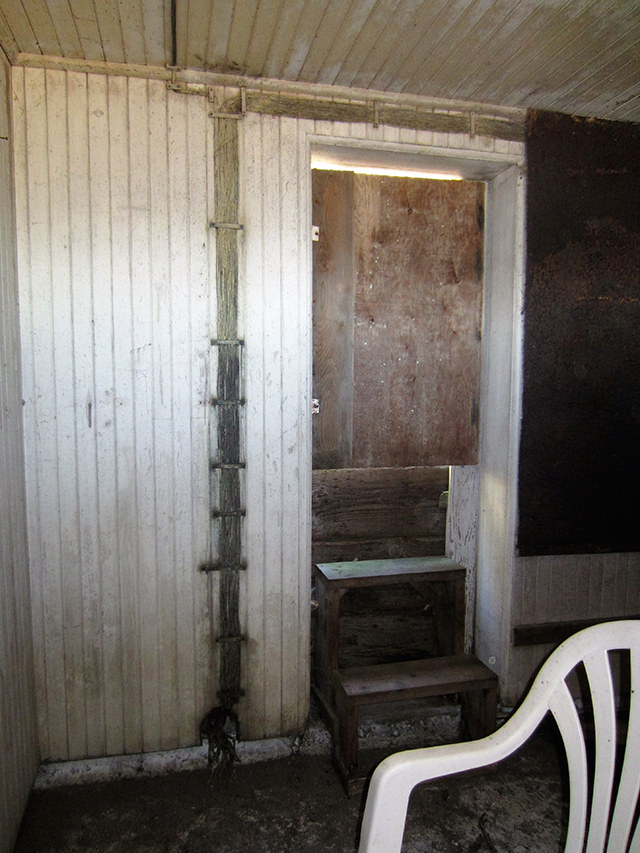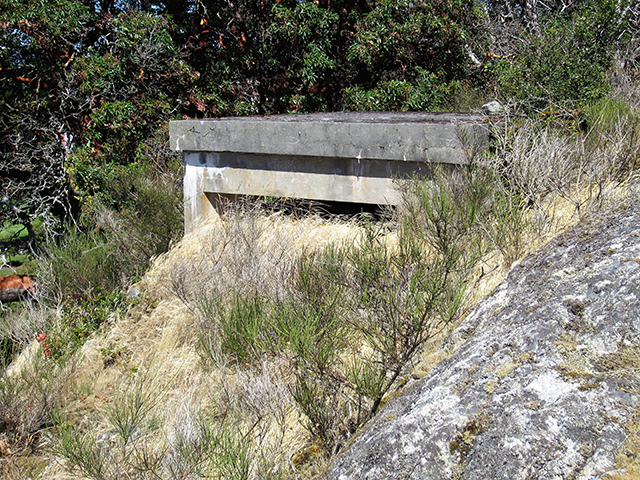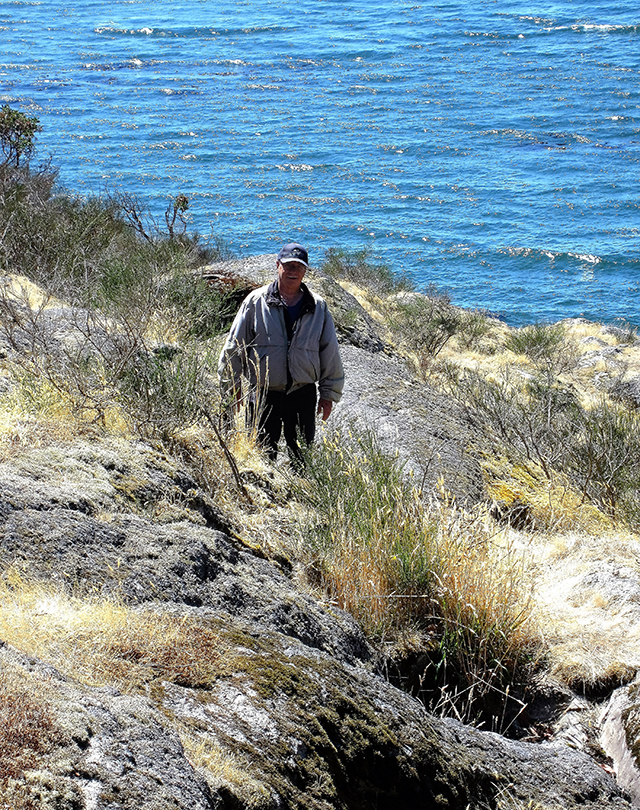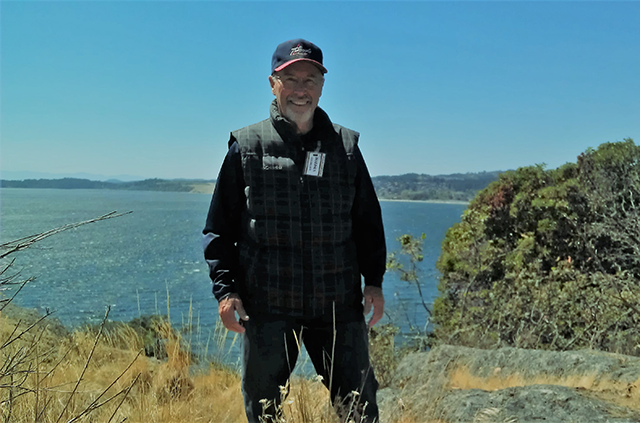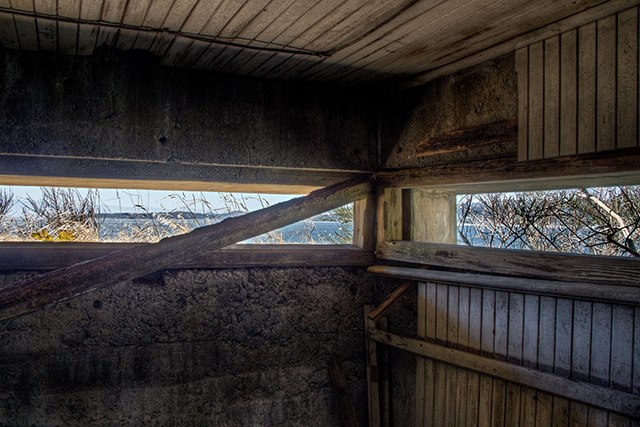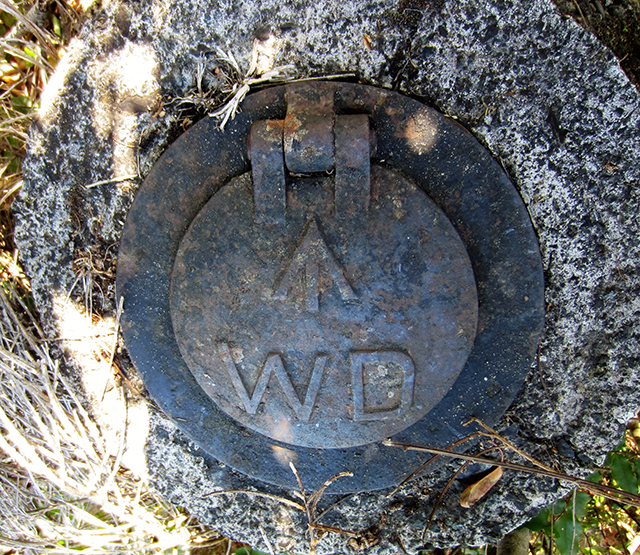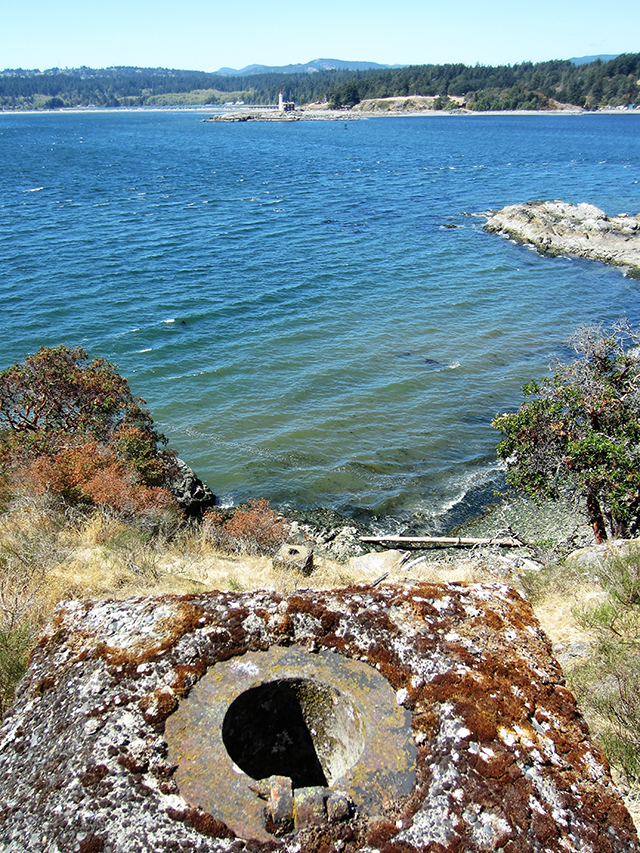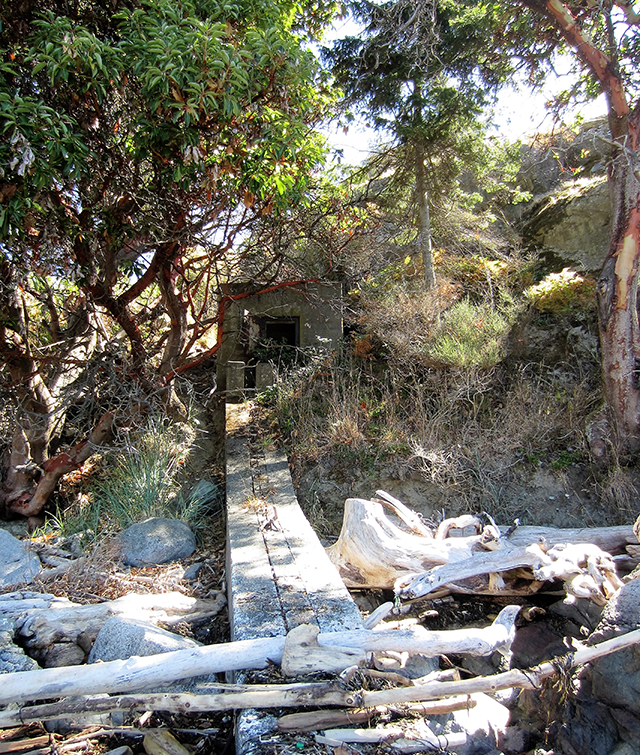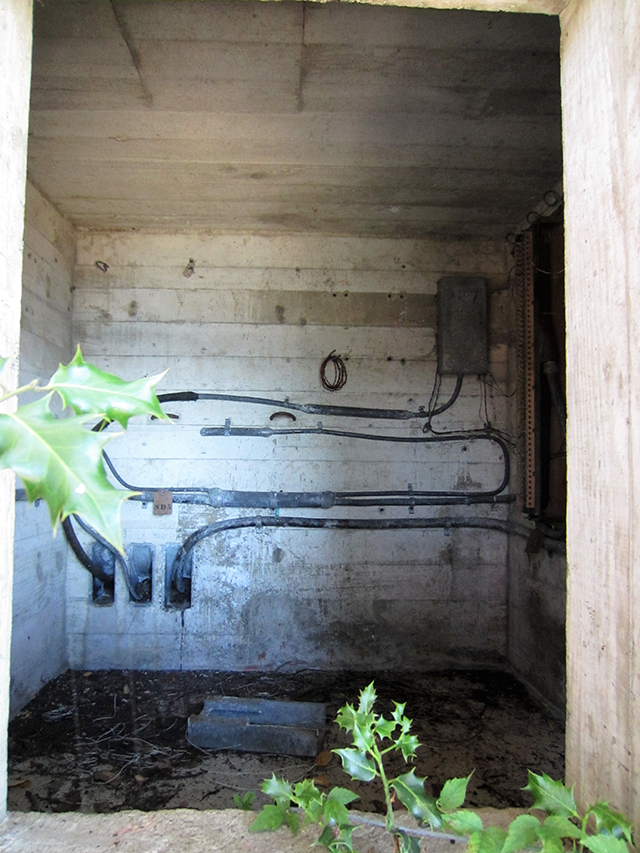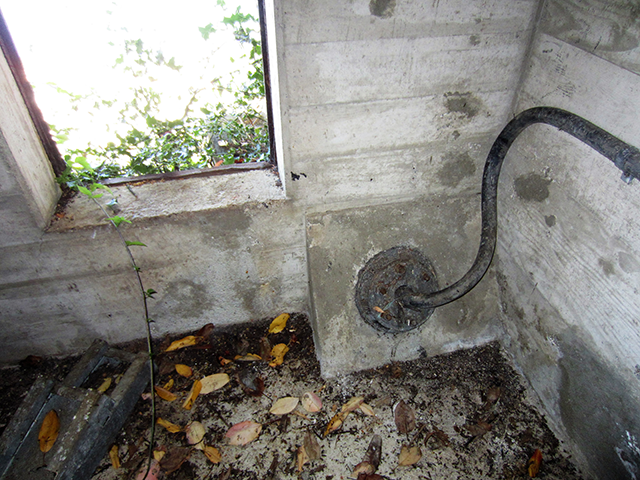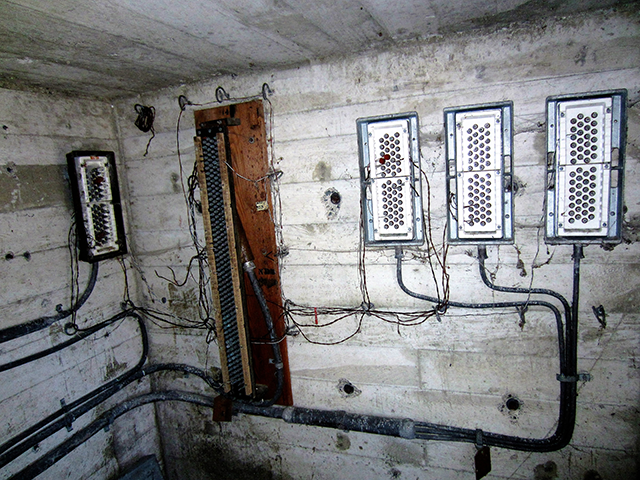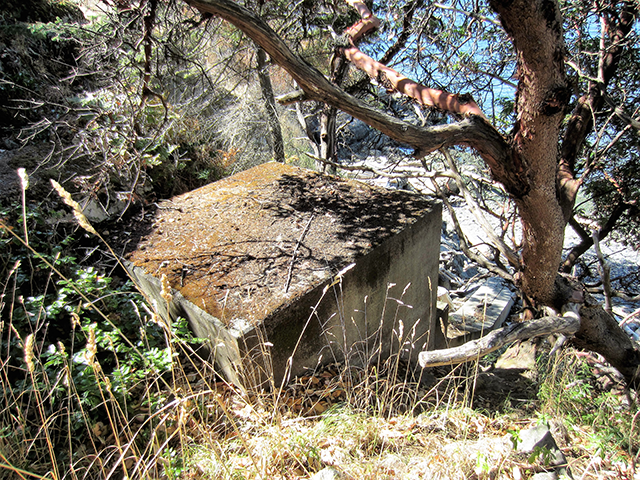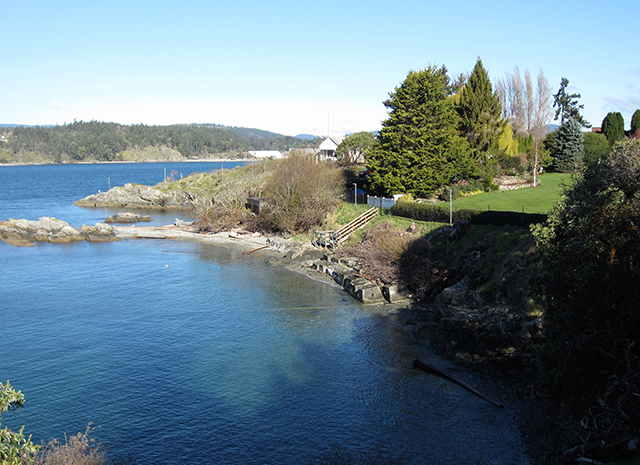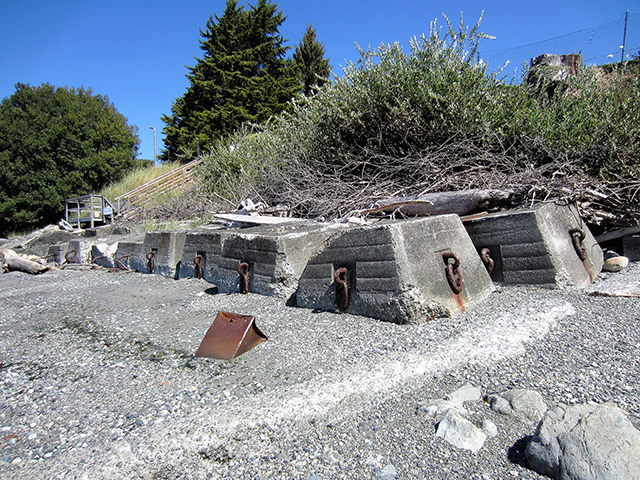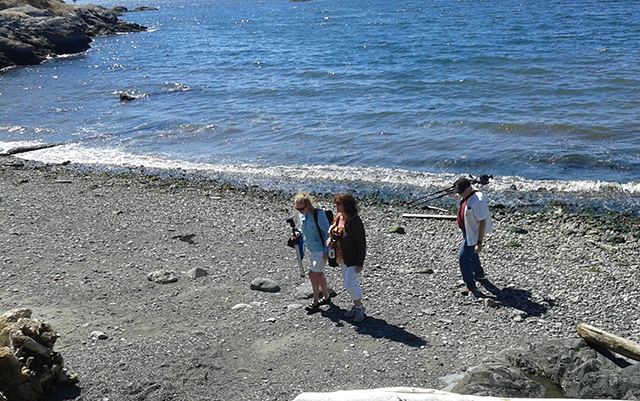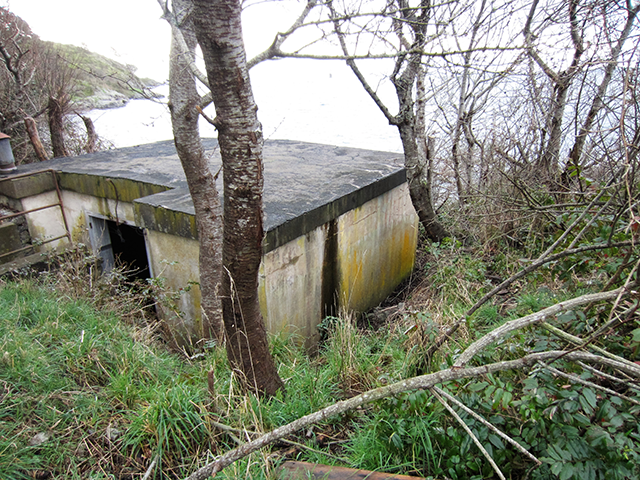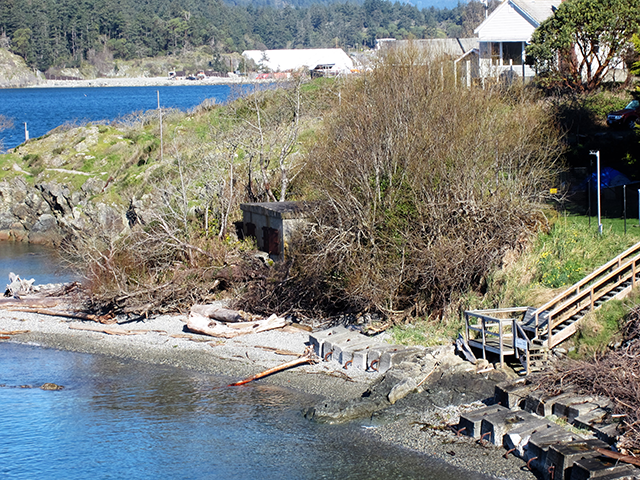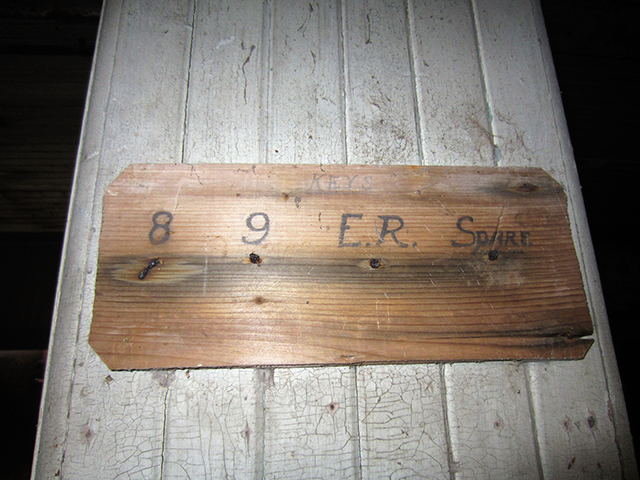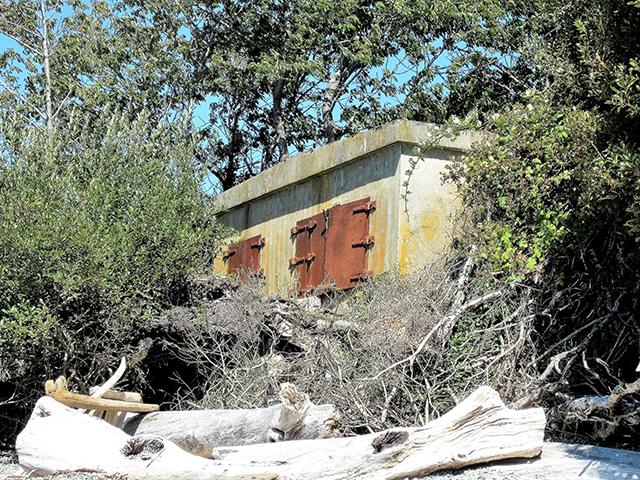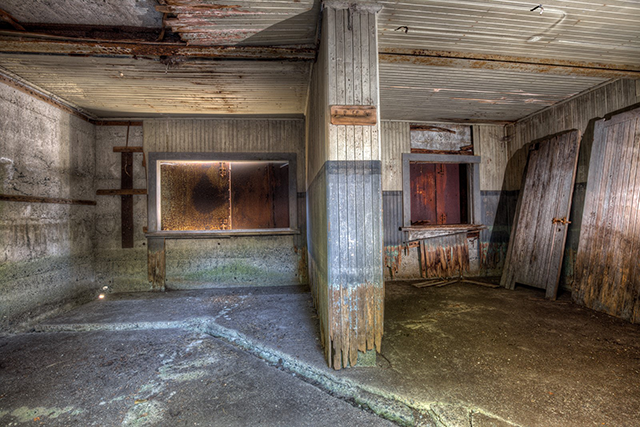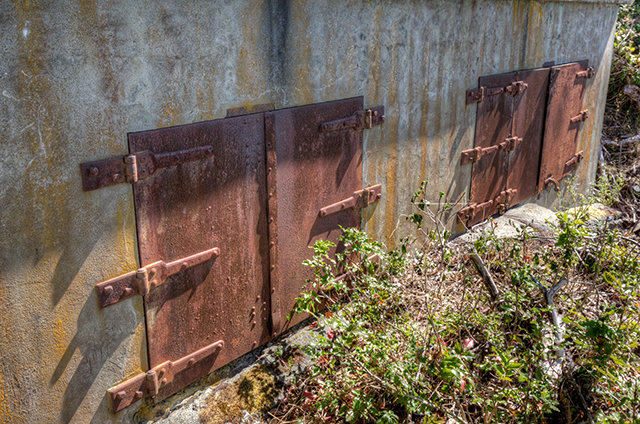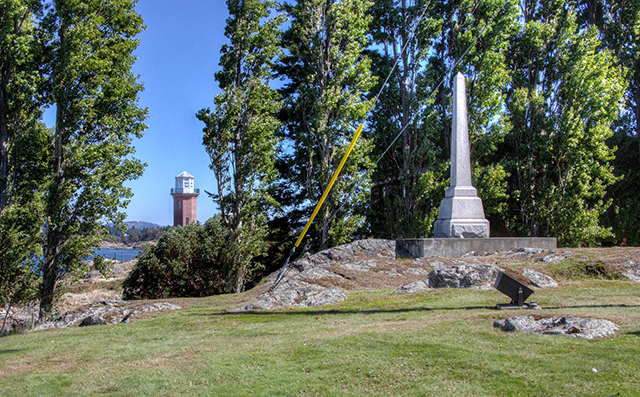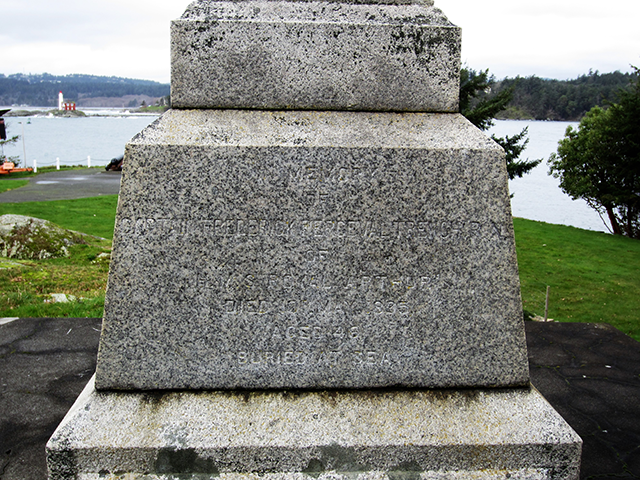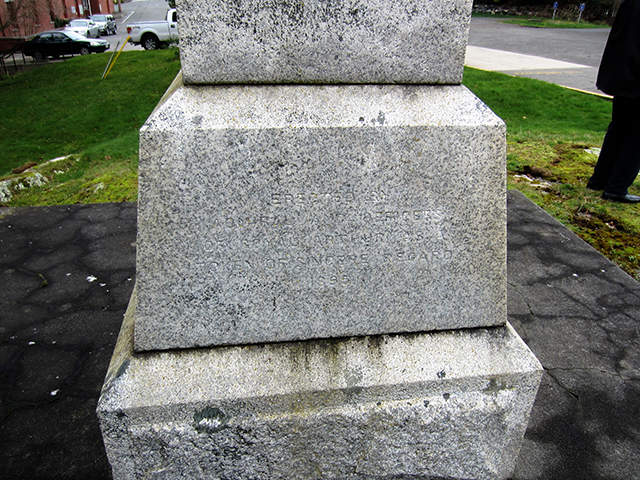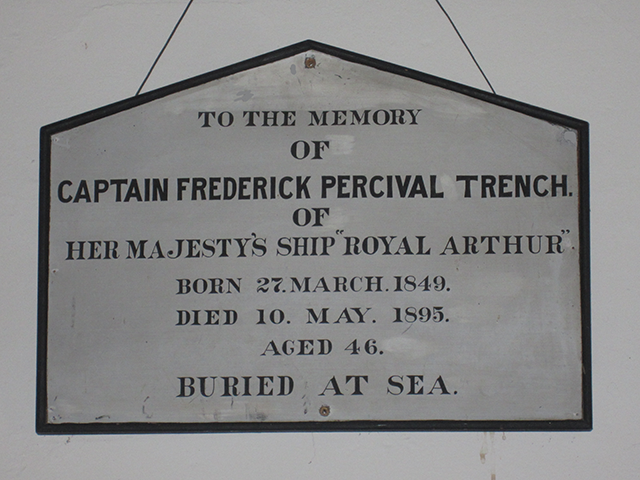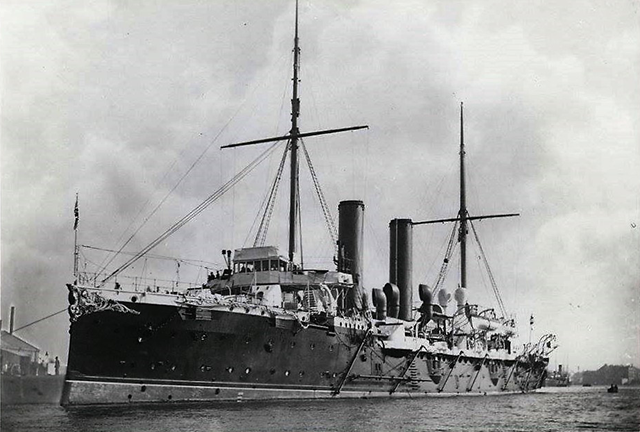 |
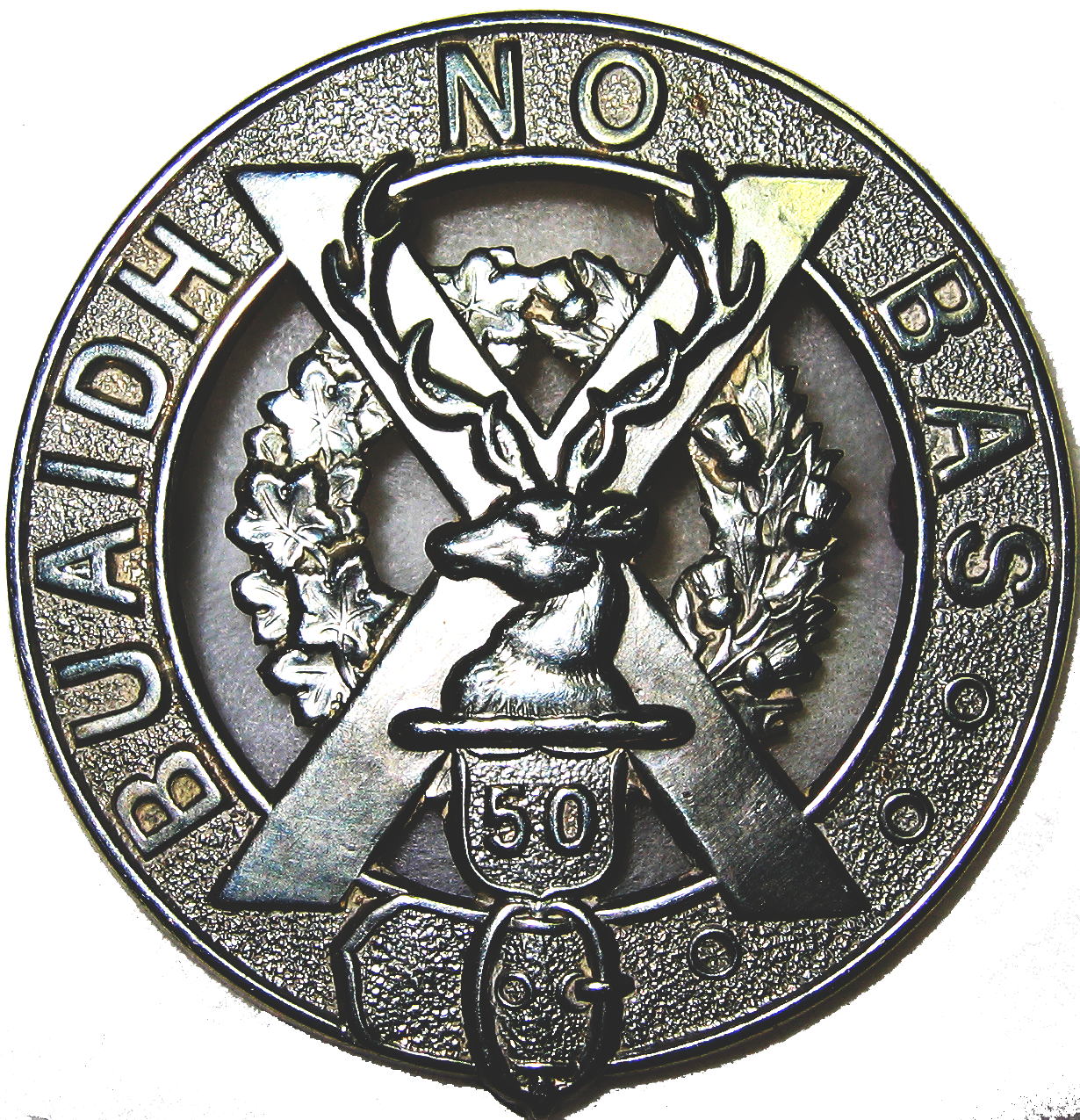 OPCMHVisitor No.: |
HISTORY OF WORK POINT BARRACKSby Jack BatesPART 10 — 1995 to 20222016OPCMH Regarding the FHBRO report 10-102 for Fort Macaulay, it remains unavailable to date and reported to still be in the approval process. Refer to March 5, 2015. WP 1031, the “Amiens Building” which retains that 3 PPCLI dedication, has had the sign “Navy Learning Support Centre” removed and was previously the “Civilian Human Resources Centre (Pacific)” This building still currently houses the Work Point Model Railroad Club and the CFB Esquimalt Power Boat Club overlooking Rose Bay and is starting to look a little run down of late as well. Lookout Work Point Garden Club – get down and dirty Looking for a fun and productive way to get outside? Try the Work Point garden Club. Vancouver Island is blessed with a climate that permits gardening year-round. Mild winters let us keep vegetables such as kale, cabbage, broccoli, and even root crops such as carrots and beets in the ground right through until spring. However, our mild coastal summers make growing heat-loving vegetables such as peppers a challenge, unless located in a warm backyard or under a season extender such as a mini hoop-house. Growing your own food is a rewarding activity in more ways than one. Gardening gives us the opportunity to grow nutrient-dense fresh vegetables and live an active, healthy lifestyle. Gardening reduces our carbon footprint by providing vegetables close to home, and can also save money on the grocery bill after a small initial investment. Work Point Garden Club welcomes both experienced gardeners and beginners. You can contact the club at workpointgardenclub@gmail.com. Times Colonist Esquimalt First Nation Claims Land, Water The Esquimalt First Nation is claiming lands and water around Greater Victoria, saying the Crown unlawfully seized the property. In a notice of civil claim files in the Supreme Court of B.C. on Tuesday, the Esquimalt Nation is seeking an order of possession for the lands and water in question, and compensation. The area covers waterfront land in Esquimalt that is now held by the Department of National Defence, running roughly north to Lyall Street in Esquimalt and west to Clifton Terrace near Macaulay Point. Plumper Bay and Inskip Islands are also claimed, as is a chunk of land from the shoreline on the west and across Admirals Road and past Seenupin Road on the east. Hallowell Road is the northern border. An oral agreement was struck in 1850 between the Lekwungen collective, representing six southern Vancouver Island sub-groups, and James Doulas, who was representing the Hudson’s Bay Company and the Imperial Crown, the notice of claim states. The Lekwungen collective is today part of the Esquimalt Nation. Under the terms of that treaty, the claim states, the Lekwungen would keep their village sites, burial lands and sustenance resource lands, including camas fields, berry and herb-gathering areas, and potato patches. Also, the Lekwungen were to retain their fishing grounds and right to fish, and the title to the land would not change, it said. The federal Crown unlawfully infringed on the Lekwungen’s aboriginal title, the document states. Lekwungen traditional territory was transferred to agents of the Crown and to others, the claim asserts.
February 11, 2016 ROYAL NAVAL RIFLE RANGE - COBURG PENINSULA It is well known that the Royal Navy built a rifle range on the Esquimalt Lagoon spit (Coburg Peninsula) with the butts (berm) somewhere near one kilometer west of the bridge, and a Rifle Hut near the present day monument just west of the bridge. To help confirm the berm location, I unearthed five lead bullets from the area inland where the butts are considered to be, within the swale of inland shoreline at that point. The standard 12 foot high berm would have been “bulldozed” inland forming the swale. Three “slugs,” identified as bullets from a Martini-Henry rifle, coincide with the rifles used by the Royal Navy and Royal Marines at that time during the 1870’s to the 1890’s. Also found were two Snider rifle bullets, indicating shooting activity possibly as early as 1866 and prior to the Martini Henry era. All the lead bullets were deformed as would have been the case upon hitting the “butts” and were found no deeper than 4 inches. The Maritime Museum of BC “The Bulletin” No. 28, March 1975, contains a story of the Royal Navy firing a 32 pounder cannon mounted ashore on the Coburg Peninsula in 1868, perhaps the one in the BC Archives photograph NA 39862, HP 008862. The LAC photograph PA 124078 shows the Royal Navy at the Musketry Hut with rifles “stacked” in military fashion, most likely Martini Henry’s, c 1870. Popular rifle range shooting distances were 200, 500 and 600 yards. In 1896 a house was built in line with the south-westerly shooting direction of the range beyond the target location in the area north-east of Sangster’s Knoll and beyond the end of the spit. This was adjacent to the water supply source used by the Royal Navy and an orchard. However, the Admiralty decided that due to the capability of the new magazine equipped rifles, volley fire would put the house and its residents in harm’s way while also declining an option to buy the land and house. Instead, it made plans to build a new 1,000 yard rifle range on “Goose Spit” in Comox and immediately closed the range on Coburg Peninsula in 1897. The house was likely in the location of James Sangster’s cabin, where Her Majesty’s sailors has erected a flume in order that the water of the springs from which the Fleet is supplied with ”Adam’s Ale” could be readily accessed for obvious reasons. James Sangster had purchased a 20 acre property on Royal Bay known as Lot 10, Section 7, Esquimalt District earlier but died in 1858, unfortunately by his own hand. “Sangster’s Plains,” the abandoned gravel pit site, was also named after him. See “Naval Rifle Range” in the British Colonist June 10, 1897, page 6 and “Burglary at Sangster’s Plains,” British Colonist June 25, 1861, page 3. Jack Bates
OPCMH Organized and participated in a tour of the Dockyard today, the focus to see where the Submarine Mining Establishment of 1893 – 1906 was located and what buildings or structures remain in the 3 - 1893 encroachment zones. Barry Gough, Clare Sharpe and I were in the group and we visited the Base Museum warehouse, exploring the many files and drawing and artifacts that are stored there. The troops involved in submarine mining and searchlight functions were the Royal Marine Artillery, the Royal Engineers and the Royal Garrison Artillery respectively during this time, all residing in Work Point Barracks. There is a magazine at Signal Hill, (SH 542) likely to be soon demolished, part of the jetty at the extent of the Hood Building (DY 575) and a concrete structure below the Admiral’s House (DY 101) at the shoreline, possibly a searchlight location or a cable transition point. There is no reference to it in the numerous heritage studies of the Dockyard. Also noted were various shoreline anchoring remnants. Another tour is to be arranged in the near future. WORK POINT Noticed today that the married quarters building 920 – 930 Bewdley Avenue was getting a new roof, and others have tarps on them. This a good sign for the maintenance program at Work Point. FORT MACAULAY Noticed today that the left gun emplacement at Fort Macaulay was flooded again, the catch basin and its 7 “ drain as not taking away the water. This happened earlier last November as well. This time the DND cleared whatever blockage there was, a Bravo – Zulu to them. The Lookout Royal BC Museum Loans First Nations Exhibit On display now at the CFB Esquimalt Naval and Military Museum is a new exhibit loaned from the BC Museum featuring early First Nations settlement and cultural features stretching along Fleming Beach and Macaulay Point. The exhibit brings to life Lekwungen land use through the panels, archival photographs and paintings. Especially rare in the exhibit is an original stone net sinker found under water on the reef off the southern end of Macaulay Point. The sinker was used to hold a fishing net down between two canoes. “This area has evidence of a fascinating human history going back over 4,000 years,” says Royal BC Museum curator of Archaeology Grant Keddie. Keddie says the area is especially unique because it is an accessible archaeological site that people can visit and learn from. Macaulay Point was known as Mukwuks by the Lekwungen First Nation on whose traditional territory it is located. Today the Lekwungen are represented by the Esquimalt and Songhees Nations. “I think it’s really important to let people in the local communities know what surrounds them historically,” Keddie says. “When people are aware of their own histories they are much more likely to preserve it and be interested in it.” Echoing his words, CFB Esquimalt Naval and Military Museum Exhibit Designer Clare Sharpe says, “We are pleased to receive the loan of this interpretive display, which is very relevant to new the permanent content our own museum has developed in connection with the First Nations presence in the region,” she says. The exhibit will be on display until April 18, 2016. With files from Clare Sharpe, Museum Exhibit Designer and Webmaster, CFB Esquimalt Naval and Military Museum. OPCMH Another tour of the Dockyard today, Richard Linzey joined Barry, Clare and I this time. After the first tour we had some understanding of the site, discovered additional structures, and had time to review the various reports on submarine mining and searchlight history. This helped in understanding the locations and provided options for interpreting. It does appear that the Army installations namely the submarine mining and searchlight structures in the encroachment areas were not shown on plans, only the Submarine Mining Establishment in Constance Cove. The list of reports reviewed were: R. Lovat - 1893-1906; Byron Taylor - Submarine Mining at Esquimalt 1865 – 1906; Imperial Fortress (Thesis) MacKinnon 1965; Stevenson and Kellogg Report - 1974; Nelson and Oliver – 1982; FHBRO 89-202; a Doug Nelson personal report and various maps and drawings. We also reviewed where the Crimea Huts had been built in 1855. Fort Macaulay Another clean-up of Macaulay Point Park took place today, ridding the park of invasive varieties of foliage. This is very good to ensure that the park retains its natural species and enforce the DND program “behind the 2010 fencing.” Esprit de Corps Magazine My article on “The Battle of Kapyong Revisited” appeared this month, look for a follow up next month with more on the exploits of Captain Mike Levy in World War 2. Click here to read my article as a PDF file. Lookout CADETS GET INSIDER VIEW of DOCKYARD Thirty-five Army Cadets from Vancouver were given a tour of Dockyard, the Legislative Buildings, the Bay Street Armoury and Work Point, organized by Major James Barrett. Work Point On a quick tour of the Work Point “proper” today after grass cutting and clean up at the Guardhouse (the site looks very respectable still) except for the roadway approaching the gate, I noted the Counter Intelligence signage on building 1071 was gone. Another department moved out of Work Point. The rest of the “campus” appears to be in constant use by various personnel. Lookout Base Fire Services Assists Esquimalt ... One month later, on March 29, FB Esquimalt fire fighters were called upon to assist fighting a fully involved trailer fire that broke. Six base fire fighters, including Crisp, attended the 2 a.m. call at West Bay Marine Village. Township of Esquimalt fire fighters were already on scene attacking the fire when they arrived. The fire originated in a motorhome, where the two occupants inside were alerted by their fire alarm and escaped safely. Three trailers parked close together were damaged by the flames, which Crisp says towered nearly 20 feet in the air. Water and foam was used by the fire fighters to extinguish the flames, which died out between around four a.m. that day. The investigation into how the fire originated is ongoing. Work Point Guardhouse I am most pleased to report that the Guardhouse lease which is to expire December 31, 2016 has been extended for another five years to December 31, 2021. The 1891 Guardhouse has quite a history, maintaining it and seeing it in active use, particularly by the PPCLI army cadets as their headquarters, is indeed a pleasure. Will now see what other enhancements can be done! PROVINCE CHINESE CANADIANS’ WARTIME EXPLOITS HONOURED Heroes: “Rumble in the Jungle” Exhibit Be prepared to eat bugs to survive and use a cyanide pill to commit suicide. That’s what a group of 150 Chinese Canadians were asked to do during the Second World War in South East Asia. “I was 18 at the time. If you were asked to do things, you did them,” said Neill Chan, a 91-year-old veteran from Vancouver who will be honoured at an exhibit opening this weekend at the Chinese Canadian Military Museum. A little-known organization called Force 136 was a British unit in the Special Operations Executive. Special Operations was a secret organization ordered to “set Europe ablaze” with acts of sabotage, and Force 136 was assigned similar hellraising duties in Japanese held territories over a vast area of the East. The majority of the recruits were from B.C., and they provided qualities such as no one else was able to in the British Empire; they slipped into occupied territories and blended in with the natives. Their contributions to winning the war – while at the same time facing shameful discrimination at home – will be told in a display of pictures, stories and artifacts called the “Rumble in the Jungle.” Museum president King Wan said recognition for their contributions is long overdue. “Force 136 was assigned to dangerous missions. They knew that if they were dropped behind Japanese lines, they only had a 50/50 chance of coming out alive. Yet they willingly agreed to do the work. They wanted to show their loyalty to Canada,” he said. Museum curator Catherine Clement said theirs was no ordinary boot camp at the aptly named Commando Bay on Okanagan Lake. They learned the arts of stalking, silent killing, jungle survival and parachuting. On an undercover mission into occupied French Indochina, Chan witnessed numerous headless corpses lying on a road. “I wasn’t nervous at the start of that trip, but by the end, I was very scared. The locals thought I was a spy. I was told they would shoot me,” he said. “I still have nightmares about training with live ammunition. One boy got shot in the buttocks and there was no first aid. They just put a wound patch on him,” he said. Among the great ironies facing the raw troops was learning how to swim. Most of them didn’t know how because they had never been allowed to enter public pools in Vancouver. Chinese Canadians weren’t permitted to vote, become citizens or hold professional jobs, but they volunteered anyway. Clement was struck by the lack of bitterness among the elderly survivors she has encountered. “Surprisingly, they were willing to go…A few never physically recovered,” she said. Initially rejected for military service on racial grounds, their willingness to forgive and fight a guerilla war was crucial in acquiring the right to become Canadian citizens in 1947. “Today, these aging warriors are proud that their service helped secure the right to full citizenship for all Chinese Canadians. Which in turn allowed them to become engineers, lawyers, doctors and accountants,” Clement said. Chan put it in a different way. “Anyone who is born in Canada, raised in Canada and earns support for a living in Canada should put their devotion to Canada first. That’s the way I feel and that’s the way I have always thought,” he said. The exhibit opens on May 14 at 555 Columbia St. in Vancouver and continues until the fall. To learn more, go to ccmms.ca.
Kent Spencer This is the same Force 136 that Mike Levy whom I have mentioned earlier, was a member of. Esprit de Corps Magazine My second article on Mike Levy was in the May issue, a further tribute to him, this time on his WW 2 exploits. Recognition is certainly due, and hopefully there will be some feedback particularly from the PPCLI to which he was so loyal had so many grateful comrades. Click here for my article as a PDF file. Fort Macaulay Today I hosted the 3rd Annual event and it was by double the people attending than last year. The weather was breezy and some rain however it was a pleasure again. We had 12 photos placed with the building # signs and the usual handout with brief historical descriptions. Special thanks to Marilyn, the Archives Sherri, my good friend Ellis and Scott Johnson of Toad Hollow who helped out. The main focus of course for those visiting is the presence of the VEMRA who set up camp again and interacted with the public after my tour of the site which included more reference to the original 1878 gun battery on the point. Esquimalt has introduced an APP which will greatly enhance the history of Fort Macaulay and Buxton Green. David Buxton dropped by with his friend Linda Hansen, which added to the day. On May 27th, Esquimalt Parks and Rec organized a “paint up” of the tunnel and the brick workshops and cut the grass effectively to profile the structures. This made it most presentable to display and more appealing to the public who traverse the site. A rough count was around 100 people who attended the event and the walk about, a lot of fun. It proved the purpose of the park, for Recreation and Historic Interest. Click here for the YouTube video file. COLONIST OUR HISTORY Quarantine was Hell at William Head CHINESE MEN RECRUITED BY BRITAIN FOR “NON-COMBAT” ROLES For 85 years, William Head Quarantine Station in Metchosin was Canada’s major port of entry on the West Coast for immigrants arriving by sea. In one of the more memorable—and—poignant—episodes from the history, the station served as a receiving centre for the Chinese Labour Corps, a group of more than 90,000 men recruited by Britain in the First World War to work as labourers on the battlefields of France and Belgium.
It began innocently enough with a simple, heartfelt letter home:
(J. Robert Davison, “The Chinese at William Head, A photograph Album,” British Columbia Historical News, 16, no. 4 (1983), 19.) Joe Hwei Chun was going to need all the faith he could muster, as he was in for the shock of his life. When he arrived at the William Head Quarantine Station on April 18, 1917, he was in transit with 2,056 of his countrymen on the Empress of Russia, bound for the Great War, not as a soldier exactly, but as a worker in a volunteer “clean up” army. He had joined the Chinese Labour Corps in Weihaiwei, China, to replace non-combatant Allied troops who were being sent to the Western Front as Canadian and British casualties mounted. In total, 84,473 Chinese labourers would join the CLC and be held while in transit at William Head Quarantine Station. They were being sent to the Ypres Salient, a curved swath of high ground from which, in 1917, the British believed they could sweep down to regain the German-occupied Belgian seaports with their deadly submarine bases in the English Channel. For the Allies, it would be a massacre with more than half a million casualties in five months; villages such as Poelcappelle and Passchendaele were annihilated. It was the CLC’s task to repair roads, drive supply vehicles, retrieve unexploded shells and bury the dead. The reality meant searching for bloated and blackened corpses among the monstrous ruins of ancient hamlets from Lillers to Langemark. It was a clandestine operation from the outset. From William Head, most were sent to Vancouver, transported in special trains to Halifax and shipped to Dunkirk. The secrecy was necessary for fear that Germany might discover the enterprise, or worse, that Chinese communities across Canada would try to prevent their countrymen from continuing on. In 1903, the head tax levied against Chinese immigrants had been increased from $100 to $500, but Conservative prime minister Robert Borden waived the tax for CLC members with the proviso that trains carrying them across Canada be locked and guarded. Secured railway cars each carried 50 labourers and four armed guards, while special police discreetly guarded platforms along the way. Most were recruited from the very outer edges of China and Mongolia, and some were likely unaware of the legislated racism against Asians entering Canada. Unlike the 17,000 Han Chinese in the CLC, these particular “soldiers” were largely uneducated in the ways of Western culture and alien even to the rest of China. The one thing they were was huge—most were over six feet tall. Those in Joe Hwei Chun’s br4igade were from Shandong province in northern China; most of the others joined the CLC from Xinjiang, Gansu and inner Mongolia. The CLC left from Weihaiwei (Port Edward), a major port city in Shandong province, which opened to the Yellow Sea. Weihaiwei was a British garrison at the time with a huge naval base and sanitarium. There, each recruit was medically examined, inoculated, given zinc-sulphate eye drops to ward off trachoma and photographed. Their blue-grey uniform was a jacket containing a brigade number and a round cap marked “CLC.” Their kit was a simple bedroll, rice bowl and tin cup. Collectively, they looked more like a penitentiary chain gang than the proud, non-combatant Allied force they were expected to become.
Dr. Rundle Nelson was the chief medical officer at the William Head Quarantine Station at the time of their arrival, and it was he who had to deal with the sudden overcrowding. William Head was equipped to handle 800 people at best, but he knew that each chartered CPR Empress liner would carry far more. Increased umbers meant an increased threat of infectious disease. Nelson was on the wharf the day the Empress of Russia arrived at William Head Quarantine Station and was reported to have said: “What shall we do if they have the smallpox?” Nelson examined al 2,057 of them, and unceremoniously had the full complement removed from the ship and quarantined at his station for 14 days. Yet, week after week, the CPR ships Empress of Asia, Empress of Japan and Empress of Russia disembarked thousands of new CLC recruits at the station’s wharf. In July, 1917, the Chinese Labour Corps had swelled to more than 30,000 men. The Canadian Militia took official charge of the corps as they landed and created a fenced-off “coolie-camp.” The CLC were accommodated in army bell tents right on the doorstep of William Head, the 5th British Columbia Company of the Royal Canadian Garrison Artillery immediately took over military discipline. The artillery made one in every 20 members of the corps wear an armband designating a corporal’s rank, and it was through these intermediaries that information regarding camp rules and routines was supposed to be disseminated. But this top-down, authoritarian model was alien to the self-reliant nomads of the Mongolian borderlands, and as conditions deteriorated with the spring rains, discipline among the rank and file plummeted. Most were used to the autonomy and freedom of the China/Mongolia plateau, where they would not kowtow to the southern Chinese overlords. To curtail the growing unrest, the artillery created Chinese work gangs who did laundry, cut firewood for the station, tended its vegetable and flower gardens, and made repairs to station facilities. Even in the evenings they dug trenches, dugouts and emergency gun pits, which made some suspect that the promise of a non-combative role in France might not have been the whole truth. The CLC members seemed to adore the children of station employees, and made them and their families small woven baskets and other gifts. Homesick, they watched the children play, and when they could, taught them the rudiments of their language. Wary but indulgent, Garrison Artillery continued with its compulsory afternoon military drill. As the many brigades reluctantly paraded around the grounds, they were often followed by playful, dancing children, chanting in Hamelin fashion, “one-two, one-two” in a Cantonese/Mongolian mix. The vast majority of the corps were cleared with dispatch at William Head and transported to Vancouver, where they faced an eight-day train journey across the country to Halifax followed by an equally long ocean passage to Southampton. The corps was ferried across the English Channel to France, where they disembarked on the beaches at Dunkirk. Most peace loving Chinese volunteers shrank in horror from the violence of the First World War. They were promised non-combatant duties, but that covenant was as hollow as as the promise of sufficient food at William Head. The British Army could not be blamed entirely for this, as all of northern France and parts of Belgium came under fire from German heavy artillery or aircraft. From Passchendaele to Le Hamel, serial bombing by the new German Air Force massacred thousands of citizens, soldiers and Chinese volunteers alike. The Commonwealth War Graves Commission recorded some 2,000 deaths among the CLC during the Great War. Most of the dead were buried in unmarked graves in cemeteries in northern France and Belgium. Anonymous white military headstones offered little solace to a saddened wanderer, their brief inscriptions reading only: A noble duty bravely done.” Without some sort of religious faith, Joe Hwei Chun, if he wasn’t killed outright some-where east of Noyelles-sur-Mer, would surely have been driven completely out of his mind. — Peter Johnson
2483 PPCLI Cadet Corps On June 5th the PPCLI Cadet Corps held their Annual Ceremonial Review at Work Point “Barracks” on the parade square. There were probably around a hundred people in attendance and were treated to a very fine display of ceremonial drill, awards and special performances by the cadet drill team and also their band. Although the corps has lost a number of their aged out cadets, the newer cadets performed at their best and showed enthusiasm and commitment. 30 in all, dressed in summer sleeves they were well deserving of the praise they received. Knowing the staff and supporters of the cadets, they were most proud of the performance and the program, rightfully so. It was bright sunny day, with a slight harbour breeze, and Work Point was the perfect place to hold the ceremony. All adjourned to the Gun Room for a social and barbeque overlooking Rose Bay, another gem of Esquimalt, with a backdrop of the Victoria Harbour and Ogden Point. A most fitting contemporary and traditional location for any military occasion as the number of veterans, parents and family members and guests could attest, personally I was thrilled and it is a pleasure to continue to contribute to their success. PPCLI Association colleague Bruce Dickey video recorded the event. Although an invitation was sent to Mayor and Council, there was not a representative from the Township of Esquimalt present. LOOKOUT Changes Coming to Naval Schools Partial … This includes the re-configuration of training establishments in Halifax and Esquimalt into two campuses, Atlantic and Pacific, under the Naval Personnel and Training Group to meet the RCN’s training requirements. Campus Pacific will stand up in a ceremony July 6. This means Canadian Forces Fleet School and the Naval Officers Training Centre will be re-configured into Naval Fleet School Pacific and Training Development Centre Pacific. Naval Fleet School Pacific will deliver individual training such as career courses and qualifications to sailors in Esquimalt. The Training Development Centre Pacific will be the RCN’s Centre of Excellence for engineering, damage control, command, leadership and professional development. This is great from a Work Point perspective as it means the enhancement of facilities and re dedication of functions that utilize the buildings and parade square in Work Point. GEESE BE GONE Another sign that Work Point will be further enhanced is that CFB Esquimalt has hired a consultant and a Nuisance Wildlife Technician (man with dog) to remedy the goose problem within Work Point proper (Head, Lyall Peters and Malvern streets). This problem did get out of control but with the new training centre plans pending, we can’t have this s--- on our shiny shoes! LOOKOUT RCN Takes Next Step in Naval Training Last Wednesday, Maritime Forces Pacific’s finest was on full parade to mark the reconfiguration of the Naval Training Development Centre (Pacific) and Naval Fleet School (Pacific.) The large scale parade was accompanied by the Naden band, and followed by a formal renaming and change of command, during which Commander S.E. Hooper took command of the Naval Training Development Centre (Pacific), while Commander Todd Bonnar took command of the Naval Fleet School (Pacific.) This article is a follow up to the July 4th article on the newly created Campus Pacific at Work Point. The notable issue here is that more and more parade square functions are being held at Work Point with a backdrop of the Royal Garrison Artillery brick buildings. It appears that photographers love this aspect as well. Now they will soon likely keep the grass cut and the weed population down ! Two very nice photos are attached to the article. LOOKOUT RANGER PATROL This article by Peter Mallet tells about the 4th Canadian Ranger Patrol Group (4 CRPG) based on an interview with Lt. Col. Russ Meades, the commanding officer. This article also includes a photograph of the Ranger Group practicing their drill on the parade square at Work Point. Once again, very photogenic, the brick buildings of 1902 are in the background. FORT MACAULAY Fort Macaulay, and Buxton Green, are the subject of increased clean ups and grass cutting this summer. I credit my sister Marilyn Day and her energy devoted to maintaining MACAULAY POINT PARK when it comes to fire prevention and mis-use / graffiti of the structures there. With the help of social media and the co-operation of the Esquimalt Parks, ETAG, Police and Fire departments, order and maintenance is being promoted. Hopefully this will let the abusers know that citizens are interested and won’t put up with any dis-respect of the Fort and the Park. OPCMH “AD FINEM” “A SEARCH FOR ARCHIE” I begin this article by referring to excerpts below from a letter known as “AD FINEM.” This post WW 1 letter was written likely around 1925 by Ronald while visiting Victoria but missing seeing his friend Arthur during the visit, a returned soldier from Victoria, B.C. Ronald had a brother Archie who was seriously wounded and whom Arthur carried to a dressing station during the Battle of Passchendaele in early November of 1917. Arthur is believed to have been a teen aged stretcher bearer in the 29th Vancouver Battalion but Archie’s unit remains a question. I hope that by reading excerpts from the letter it will help discover “who was Archie,” that is what this quest is all about. Seemingly, Archie and his parents, brother Ronald and sister Claudine, resided in Toronto after WW 1; their surname remains unknown, and there was no other written correspondence found. They did perhaps have relatives living in Vancouver at the time.
I’m sure there are many stories of incidents like this which come to the surface often as time goes on, estates are settled, and people reveal letters because as we all have found out, the veterans were reluctant to talk about the war, and likely for good reason. Commemorative monuments emerged all across the country after the war in every city and town dedicated to the memory of loved ones, the brave souls that didn’t return and also to those who did and carried on, deservedly so. I would like to perpetuate the memory of them, as they gave their all. If by any chance after reading this article you have occasion to recall this story or are interested enough to search for Archie and his family, please contact me as below…..”Ad Finem” A SUMMARY OF THE BATTLE OF PASSCHENDAELE In October 1917, the Canadian Corps, now commanded by Lt. General Sir Arthur Currie, took its place in the front lines. On October 26th, the 3rd and 4th Divisions launched the first Canadian assault, in rain that made mud worse than ever. Three days of fighting resulted in over 2,500 casualties, for a gain of only a thousand yards. A second attack went in on October 30th. In a single day, there were another 2,300 casualties – and only another 1,000 yards gained. On November 6th, the 1st and 2nd Divisions launched a third attack that captured the village of Passchendaele, despite some troops having to advance through waist-deep water. A final assault on November 10th secured the rest of the high ground overlooking Ypres, and held it despite heavy German shelling. Canadians killed and wounded numbered over 15,000 in all. Passchendaele has come, perhaps more than any other battle, to symbolize the horrors of the First World War.
A three page article in the Legion Magazine November 1989 titled “PASSCHENDAELE – 1917” is an excellent read on the details of the battle with excerpts from “Marching to Armageddon: Canadians and the Great War 1914 – 1919” by Desmond Morton and J.L. Granatstein…1989. Jack Bates See WORK POINT BARRACKS 1924 for AD FINEM original. LEGION MAGAZINE THE MILITIA AND THE COAL MINERS’ STRIKE In 1913, the militia was called out during a coal miners” strike on Vancouver Island. Called the Great Strike of 1912–1914, it was to be and remains the longest deployment of the militia in aid of the civil power in Canadian history. The immediate cause of this strike in Nanaimo, 110 kilometres north of Victoria, was mine safety, union recognition and the firing of a union organizer. However, attempts to resolve the issues failed. After a raucous meeting at the Cumberland Hall on September 25, 1912, the miners voted to strike. Canadian Collieries, the owner of the Dunsmuir mine, responded by evicting the striker’s families from the company housing, hiring “scab” labour and refusing to negotiate. The unrest spread to the other mines with similar results. Over several months the confrontations grew stronger. Appeals to the acting Premier and Attorney General, John Bowser, for extra police saw the recruitment of 100 special constables. But the specials soon realized that the $2.50-a-day wage wasn’t worth facing an angry miner brandishing a two-by-four. Reports of riots at Nanaimo and Ladysmith, gunfire at Extension, the number of specials leaving, finally pushed Bowser and his Executive Council to call out the militia in aid of the civil power. Scrambling to get the troops into the field, Bowser played fast and loose with the legal requirements. Two government representatives, neither a Justice of the Peace as required by the Militia Act, were pressed to sign the necessary requisition. Colonel John Hall, who would command the gathering force, was eager to get into the field but angry about the legal machinations. “I understand that except as an honorary colonel, no member of the executive [had ever] worn the uniform of the militia….So little had the executive thought that the militia would be effective, they had not taken the trouble to inform themselves what legal formalities were involved,” he wrote. Hall had mobilized British Columbia’s 5th Regiment, Canadian Garrison Artillery, under Lieutenant-Colonel Arthur Currie-who would go on to lead the Canadian Corps in the First World War-along with his own regiment, the 88th Victoria Fusiliers and 50 members of C Battery of the Royal Canadian Artillery of the permanent force. The Fusiliers mustered with two machine guns and 24,000 rounds of ammunition. The troops paraded a 09:00 on August 13, 1913, receiving 20 rounds of ammunition, rations for 24 hours and not much else. At 10:00, 193, Hall was told by Lt.-Col. Alexander Roy, the District Officer Commanding, (DOC) of the permanent force, to proceed to the strike zone. It was an imposing force; over 1,000 all ranks that was to enforce law and order in the strike zone. I REQUIRE YOU TO WALK OUT IN SINGLE FILE TO THE COURTHOUSE AND Hall had made arrangements privately with the Nanaimo and Esquimalt Railway for a train prepared to move at a moment’s notice. He then arranged to have the news made public. It was a time-honoured form of military deception, using a semblance of secrecy to make the tactics appear genuine. In the mean-time he had secretly arranged with Captain James Troup, supervisor of the Canadian Pacific Railway’s British Columbia Steamship Service, for the transportation of the troops on the Vancouver boat leaving that evening. When the order to leave was given, the provincial police cut the telegraph and telephone lines to Nanaimo. At 02:00, August 14, the troops left Victoria, arriving three hours later at Brechin Mine where they landed without opposition. Surprise-that rule of war- had been achieved and the rumoured 1,500 armed strikers ready to block the road to Extension never materialized, According to Hall, “All the wild stories of shooting and loss of life are without a shadow of truth. There has been a little rough work and perhaps a little horse-play, but there has been no danger to life.” Welcomed by Nanaimo Mayor John Shaw, the troops marched into the town where, at bayonet point, a meal was obtained for them at the hotels. A detachment found no opposition at Extension, although some mine property was damaged. The families of non-striking miners had fled into the woods to escape retaliation. The troops carried out a rescue operation to collect and succor these unfortunates. Having done that, the troops marched back to Nanaimo to quell a disturbance. There was none. WHEN HE FOUND THE PHONES BEING TAPPED, HE HAD The troops had been on continuous duty for 24 hours, and had met no resistance. They were hungry, tired and grimy. Once again a meal was obtained at the end of a bayonet. The troops bedded down in railway cars without blankets. So far, the only demonstration of force was not against recalcitrant strikers but unwilling inn keepers who did not want to feed the troops. As Hall’s detachments were marching, other militia units in Victoria and Vancouver were being mobilized for duty, arriving at Union Bay on August 15. The Seaforth Highlanders, 6th British Columbia Regiment (Duke of Connaught’s Own), 19 Company of the Canadian Army Service Corps and the 6th Field Company of the Canadian Engineers provided another 500 men to what now was called the Civil Aid Force. Like the units before them, they had little equipment. Still it was an imposing force, nearly 1,000 all ranks. The years of neglect of the militia by Ottawa meant the “support tail” of the Civil Aid Force was non-existent. They lacked everything from maps to field kitchens. This led a prominent Canadian militia officer, Col. William Hamilton Merritt III, to reflect that “the militia is perhaps the most expensive and inefficient military system of any civilized country.” Still, in true military fashion, the force struggled on. A permanent camp, finally replete with tents, was established at Stark’s Crossing, five and a half kilometres out of Nanaimo. Hall marched the militia from area to area, guarding mine property, to “show the flag.” For the troops, it was tedious with little indication that law and order had broken down. Hall, finding that the telegraph operators supported the strikers, seized the telegraph office. When he found the phones being tapped, he had two Seaforth Highlanders transmit the messages in Gaelic. But there were serious legal issues. Hall’s orders were verbal-not the required requisition- conveyed by the DOC, Roy, from Bowser. Hall realized the dilemma but found that the situation at Nanaimo, as he put it, “required immediate action response on my part and the acceptance of the risks of illegal action.”
Based on intelligence reports that representatives from the United Mine Workers of America (UMWA), which was providing strike pay, were to arrive at Nanaimo to meet with the strikers and the discovery of a case of 24,000 rounds of ammunition by the artillery and engineers, Hall determined to launch a major operation against the union on August 19 – 20. After careful preparations the troops formed up as if they were to attend a church parade. Once the steamer arrived from Vancouver, the British Columbia Provincial Police, backed by the militia, arrested the men as they came off the ship. None offered any resistance. According to Hall this was “the first instance of the restoration of civil control in the strike area.” Further operations, planned in great secrecy, were carried throughout the strike zone. At Nanaimo, while the striking miners were meeting at the Athletic Club, troops surrounded the building. Cars were driven up and their lights focused to blind anyone leaving the meeting. When the first man appeared, “it [was] impossible to describe the look of blank amazement,” Hall wrote. The man was ordered to fetch the chairman. When the chairman came out Hall commanded: ”I require you to walk out in single file to the courthouse and anyone attempting to run away will be bayoneted or shot!” At 01:00, the men inside the hall were allowed out. In groups of 10 they emerged into the glare of the headlights. According to Hall, “The little walk in small parties for about 100 [metres] inside a double row of fixed bayonets with the unknown something to face at the end, caused a marked change in the attitude.” In all, over 200 men were detained on various charges from unlawful assembly to riotous behaviour. After that the militia spent its time patrolling, backing up the police, making arrests and in basic military training. It was much needed. According to Capt. William Rae of the Seaforth Highlanders, “The chief difficulty at first was [the lack of] experience of soldiering previous to joining the Seaforths. The impossibility of giving any clear understanding of the real meaning of military discipline to men who attend a few drills a year was clearly shown.” Granted, but in the true Canadian tradition of soldiering, once on active service, the trooper learned fast, aided by the presence of the regular and ex-regulars, both Canadian and British. The Civil Aid Force, all things considered, performed well enough. By the end of August 1913, civil order had been restored in the strike zone. That led Roy to relay a message to Hall from Bowser ordering the force reduced to 286 all ranks, who carried on the deployment in the same tedious routines. By this point, issues concerning pay and allowances emerged. The pay for a private soldier was @1 a day with a 10-cent hard lying allowance. For a junior officer it was @2.00 plus the 10 cents. The federal minister of militia, Sir Sam Hughes, was informed that the pay did not cover the cost of maintaining the soldier’s families. But as expected, Ottawa was indifferent to the financial plight, and the British Columbia government refused to help.
Eight months after the first boots were on the ground, DOC Roy wanted the Civil Aid Force cut to 85 all ranks. He demanded his regulars back and wanted to replace the militia with provincial police. Hall refused. The issue of force reduction began a droll contest between Hall, Roy, Hughes and the Prime Minister Sir Robert Borden. It was all for naught, for as the Judge Advocate General noted, it was not up to them: “There seems to be nothing for it but to repeat to the DOC (Roy) the information that has been given to him so many times before…The Dominion Parliament has placed the militia at the disposal of the civil magistrates…and even the Governor General-in Council cannot interfere with them. The troops stayed. Then on August 5, 1914, a year and a day since the militia were mobilized, the strike collapsed when the UMWA ceased to cover the miner’s strike pay. Hall wrote, “This closed a duty unique in the history of the Canadian militia for its long duration, its avoidance of forcible action, and the fact it was handled, for the most part by the active militia.” By that point, Britain had declared war on Germany. Canada was at war. The Civil Aid Force was stood down on August 15, and the men returned home. Most immediately enlisted in the Canadian Expeditionary Force and went to fight, many to die, in Flanders Fields. — Peter Silverman LOOKOUT GARDEN CLUB Do you have a green thumb ? The CFB Esquimalt Work Point Garden Club is currently seeking new membership. Located on the corner of Anson and Munro St, we have expanded our space and are looking for people who want to garden. Available plots are 15 ft x 15 ft and have individual water service. Questions and applications can be directed to our Club Secretary at workpointgardenclub@gmail.com. The club has expanded while adding fencing as well to keep the intruders out. This is a great opportunity to garden locally and gives Work Point supporters something to focus on. Fresh air and easy parking should be noted as a drawing card and of course what your efforts produce. DOCKYARD A third visit to the Dockyard today, and a bonus as the tide was out in the morning. This was organized so that Scott Johnson and his wife Laurie could accompany Clare and I as well as my old friend Ellis Meads, a retired civil engineer, who has a family history within the Dockyard. Scott and Laurie are with Toadhollow Photographers and have done a lot of “takes” on heritage sites. Once again each time I visit this location new information is found and recorded and especially today with the tide out we were able to walk on the beach along the little bay south of Duntze Head. Here we found a WW 2 bunker, or vault, which houses telephone cables as a splice point and transition location for three land cables to a submarine cable which goes to Fort Rodd Hill. This is similar to the one at Fleming Beach adjacent to Buxton Green. We also had a waterfront view of the DESL bunker with its steel doors and boldly went inside all the other bunkers, this we hadn’t done before. An excellent day, there will be a follow up story with the history of the structures shown only as “old bunkers” on plans of the Dockyard, and photos of course, and inclusion of Fort Rodd Hill as a co-defender of Esquimalt Harbour. Thanks again to Clare Sharpe for arranging access on behalf of the Base Museum. FORT MACAULAY A great credit goes to “Mission Adventures” with “New Hope Community Church” and six others who painted the structures at the Fort today. This all with promotion by ETAG’s Peter Justo and Dan Jenkins. It’s too bad the Township sees fit to entertain a contest between the graffiti brats and its Parks crews who wish to keep the Park respectable. I hear certain “vigilantes” are about to appear to take the situation in hand…. Old Victoria BC On the website Old Victoria BC a video called “Construction of the Macauley Point Outfall, Victoria 1968 – 1970” was shared. It can be found on Youtube.com, a very worthy watch. Click here to view this Youtube video. COLONIST A LOT IS GOING ON AT WORK POINT FACILITY Re: “Maybe we’ll finally get something done on sewage” letter August 22. The letter writer refers to Work Point as a closed base. I live across the street from Work Point. For a military base that is closed, there sure is a lot of action going on. With the reorganization of the Naval Fleet School training system, Work Point is being used more than ever. Activities include officer training, naval boarding-party training, seamanship training, French language training, cadet training / parades, accommodations, first aid training, the Raven program and reserve / militia training. One of the options for the sewage treatment plant location is McLoughlin Point, which is located at the back of Work Point and within close proximity to military housing. If this location was good enough for a tank farm, then a well-designed building for sewage treatment should be a step up. CPO2/PM2 Dave Bates CLOVER POINT On a visit to Clover Point today, I noted a cairn dedicated to The HBC site and also the former site of a Rifle Range. Of particular interest is the 99 year lease from 1947 !
See COLONIST 1988 for an associated article. TIMES COLONIST In these Times Colonist editions, a story on the 1942 shelling of Estevan Point by the Japanese submarine I-26. See COLONIST articles June 23, 1942 (1,5), July 1958 (27), March 1, 1959 (5), October 25 – 26 1981, November 9, 2014 (D 2) and a book written by Brendan Coyle “WAR ON OUR DOORSTEP” - 2002. Work Point Barracks The current historical buildings within Work Point I have discussed previously are building #’s 1004, 1020, 1068, 1070, 1071 and 1075. Below are post construction drawings courtesy of the CFB Esquimalt Naval and Military Museum:
OPCMH For those interested in Coast Artillery Forts of the Pacific Northwest, Google that site, most interesting and by comparison to what we have here. OPCMH McLoughlin Point Historical Summary • Work Point • CFB Esquimalt • West side of Victoria View Road
See November 22, 2022 for an update to this item and photographs. Jack Bates October 19, 2016 BROTHER’S ISLAND Brother’s Island, just outside the entrance to Esquimalt Harbour and once called “Deadman’s Island” for obvious reasons, was the location of a cemetery for the Royal Navy at Esquimalt. Although the earliest reference to a burial on Brother’s Island was in 1850, the earliest known grave marker there was that of George Macaulay, the Chief Engineer of HMS Brisk, who died on August 2, 1855. The monument was inscribed “Erected by a friend who knew him long and valued him much.” There were 19 Royal Navy burials recorded on Deadman’s Island. A second and preceding location was Fort Victoria’s graveyard at the corner of Douglas and Johnson streets, where Benjamin Topp RN, was buried in 1846. Also, three sailors from HMS Thetis were buried there in 1852. A third location for deceased Royal Navy officers and men was that of the Old Quadra Street Burying Ground, later and currently called Pioneer Square in Victoria where 55 burials are recorded. It housed the “Naval Corner” after 1856 and received the remains of burials transferred from the Fort Victoria graveyard commencing in 1859. Visit the “Old Cemeteries Society” for more on these two City of Victoria graveyards. In 1868, a Royal Navy Cemetery with a chapel was created where it remains today, situated on the south side of the Gorge Vale Golf Course. Within the chapel of the now “Veteran’s Cemetery” are two large shield shaped plaques containing the names, rank and age of nineteen officers, seamen and marines and the ships they sailed on dating from 1850 to 1862, buried on “Deadman’s Island.” According to Admiralty correspondence in 1878, the intention was to relocate the buried remains of the nineteen souls to the new Royal Navy Cemetery to facilitate the installation of a three gun battery, a supporting magazine and artillery stores as required for the new coastal defence scheme. The work was to be done by private contract so “not to excite the susceptibilities of any persons interested in the grave yard at Deadman’s Island.” However, arrangements could not be finalized in time and two guns, an 8 inch and a 64 pounder both Rifled Muzzle Loaders, and a magazine, were installed in 1878 under the sense of defensive urgency of the day. In 1886, the third gun, a second 64 pounder RML and an artillery store was initiated, along with the intended earlier prior relocation of the buried remains of the 19 Royal Navy Officers, Seamen and Marines. They were finally re-interred in 1887 in the new Royal Navy Cemetery as previously planned, with some expressed regret as to the timing. The cost of $660, paid for by the Admiralty, included: ”Viz. stone tablets and new head boards (if any) and new coffins in every case, and also the cost of digging the new graves.” The third gun, a 64 pounder RML, and artillery store were installed coincidentally with the relocation and reinternment procedure. The completed armament of the battery on now “Brother’s Island” consisted of three guns, one 8 inch and two 64 pounder Rifled Muzzle Loaders, with a supporting magazine and artillery gun store. The guns had been strategically placed so that their seaward arcs of fire would protect Esquimalt harbour and from Rodd Hill to Macaulay Point against attack. They were hauled onto the island by virtue of a landing stage and stairway on the north – west shore of the island. Three other earthen and wood batteries built and completed coincidentally in 1878 forming the initial Victoria- Esquimalt Coastal Defence Fortification’s network, were at Finlayson Point (two 64 pounder RML guns), Victoria Point (two 64 pounder RML guns) and the largest at Macaulay Point (three 7 inch RML guns). The four batteries were manned by the Victoria Battery of Garrison Artillery, the volunteer local militia unit at the time, until the arrival in 1887 of “C” Battery, Regiment of Canadian Artillery, in Victoria. Under the command of Lt. Col. J. G. Holmes, it was responsible for training the local militia while maintaining the armaments, stores and security of all four batteries. This responsibility included the Dominion of Canada powder magazine at Beacon Hill Park, a source of discontent within the City of Victoria, the Drill Shed / Hall in James Bay, and eventually the Clover Point rifle range along Dallas road waterfront. On September 14th of 1888, a fire on Brother’s Island destroyed the three gun platforms, the wooden magazine and artillery gun stores. From all reports it appeared that the fire started from camp fires on the beach, “communicating with” the grass and brush which covered the island. A request was sent for replacement of the guns and stores to Ottawa including inventory from axes, to lanyards to shells. There was a minimum amount of powder stored on the island as the main quantity of the powder inventory was being stored in the magazine at Beacon Hill. By this time in 1888, more modern and permanent breech loading gun emplacements were in the developing stages to enhance the Fort Macaulay battery and the building of a new battery at Fort Rodd Hill. It appears that the Brother’s Island battery was then soon abandoned rather than being rebuilt and remains today covered in brush, protected by “No Trespassing” signs.
Jack Bates SONGHEES PLACE NAMES AND HISTORY Click here for Songhees Place Name and History (PDF). XHAMASUNG TO ESQUIMALT
LOOKOUT CEREMONIAL CANNONS MAKE LONG – WAITED RETURN TO D 70 A pair of ceremonial cannons that have been fixtures in front of Dockyard building 70 for as long as anyone can remember, have undergone a full refurbishment. The two saluting miniature cannons were removed from the front of the building when full scale renovations and seismic upgrade construction began in the spring of 2014.In late August, the cannons were taken out of storage for reinstallation. “The cannons were tarnished and their wooden base was completely cracked and weathered, and looked dusty and beaten from the elements,” says Doug Ko, Real Property Operations Manager. “I can definitely see the difference now. They have been transformed much like a heritage car; all shined up and gleaming and glistening.” Staff in the carpentry and metal shops each had a hand in the project. New wooden bases were fabricated, the chrome and stainless-steel barrels were polished, and the cannons repainted. They were re-assembled and returned to D 70’s entrance at the end of October. According to Government of Canada records the Federal Heritage Building Dy 70 was built in 1937 and was the first major Canadian built structure erected in Dockyard by the Royal Canadian navy following the acquisition of the site by Canada in 1910. It first served as the Command and Administrative Centre for the base during the Second World War. The brick structure was originally two stories when it was built, but a third story was added in 1941. While the history of DY 70 is well documented by military historians, the arrival of the cannons and story behind them remains a mystery. There is brief passage in the book CFB Esquimalt Military Heritage by L Col F.D.H. Nelson and Dr. N.E. Oliver mentioning that the entranceway to the building is “flanked by the saluting cannons.” Imagery of the cannons in the museum’s archives dates as far back as the mid-1969’s, with the two cannons clearly visible in the cover shot of The Crowsnest 1964 issue.
OPCMH EXPLORING “OLD BUNKERS” AT THE ESQUIMALT DOCKYARD See July 1946 for an article on the “Crimea Huts” also located in the Dockyard. While researching the history of Submarine Mining and Defence Electric Light systems during the pre WW 1 era of the Victoria Esquimalt Coast Defence fortifications, I discovered “Old Bunkers” shown on plans of the Esquimalt Dockyard south of Duntze Head along the shoreline. Google Earth revealed some structures as well as the following reports: Stevenson and Kellogg - DND Building Study (1974); Ron Lovatt – History of Submarine Mining and Boom Defences in Esquimalt Harbour 1893 – 1938; 1974; Nelson Oliver - Heritage Building Study (1982); Ron Lovatt – History of the Defence of Victoria and Esquimalt 1899 – 1906 (1983); FHBRO Report 89-202 - Dockyard (1989); FHBRO Report 89-203 Signal Hill (1989); Byron Taylor - Submarine Mining At Esquimalt 1865 – 1906, and Roger Sarty – The Maritme Defence of Canada (1996).
There was minimal official documentation found on the structures as they were within War Department Encroachment areas created in 1893 dedicated for use by the British Army Artillery and Engineering units. These intrusive “encroachments” per se meant the War Department held the jurisdiction and not the Royal Navy; records were deemed classified and apparently destroyed at some point in time. In 1903 there were three encroachment areas while a fourth was added in 1904. Further researching through Histories of Coast Artillery and Submarine Mining in the British Army, Canada’s Bastions of Empire by Bryan Elson and Barry Gough’s Royal Navy and the Northwest Coast of North America, confirmed the involvement by the War Department. Richard Linzey of the BC Heritage Branch also provided his interpretation of the remains and plans sourced from the CFB Esquimalt Base Museum indicated locations of the structures. The Base Museum also contributed their History of the 48th Submarine Mining Company, Royal Engineers. All the troops involved in the submarine mining establishment and searchlight deployments at the Dockyard and Signal Hill resided at Work Point Barracks during the 1899 – 1906 era. Coincidently, troops in the British “Army Ordnance Corps” who were stationed at Signal Hill resided in the brick buildings astride Esquimalt Road. The Royal Engineer’s Journal of January 1, 1903 earned a descriptive account of the Esquimalt Station and the Daily Colonist of June 29, 1902 (9) “Defenders of the Pacific Gateway,” includes photographs of the garrison of “Royal Corps,” Work Point Barracks and Fort Macaulay, along with a history and evolution of the Pacific Defences to date. Finally, three field trips were undertaken to actually visit and photograph the sites, thank you to the Base Museum’s Clare Sharpe for supporting this quest and being part of the “field crew.” Other members of the group, author and historian Barry Gough, Richard Linzey of BC Heritage Branch, my friend Ellis Meads, a retired civil engineer who has family ties to this area, along with Scott and Laurie Johnson of Toad Hollow Photography and myself. Exploring the sites made identification of the structures conclusive and revealed that modifications had been made for WW 2 in some cases while the original intention of the systems could be visualized as the structures are quite in-tact. Each time we went there another bit of information was recorded while other questions were raised as the “history lesson” began to unfold and new discoveries appeared. Low tide on the third visit afforded views and access from the beach. Starting near the top of the high ground is the Officer Commanding Submarine Mining (O.C.S.M.) Observing Station (built by April 1900 and where firing of the 500 lb Observation Mines was controlled), once accessible via stairs and a pathway blasted through rock from the cluster of buildings that was the operational control of the submarine mining system and searchlight installations, and where building DY 260 (Henderson Building) is situated today. The pathway is closed off since the buildings: DY 31 (Test Room, built by November 1900 where continuity and switching were monitored) DY 32 (Engine Room, built in 1899 which provided power for the minefield and the defence electric lights # 3 & 4) DY 33 (Unknown) and DY 34 (Oil Stores, built in 1900) were razed in 1994. The four buildings were designed and built by the Royal Engineers, likely 2/44 Fortress Company which was associated with the 48th Submarine Mining Company from 1900 to 1906. Armoured cables from the four building cluster to the Observing Station are visible on the ground at one point along the pathway while a hand railing still leads the way along the top of the ridge. Telephone communication systems had been installed by June 1903 while prior to that communication and messaging was by flags, lamp signalling or messenger.
Part way down the hill seaward in a south westerly direction is the O.C.S.M. Fighting Station (built by December 1902 which was the fighting post for the Officer Commanding Submarine Mining). This bunker is spacious, has westerly and northerly vantages through horizontal observation slots with room for a chart table also referred to as the “control room.” This is where the 100 lb electro-contact mines’ circuitry terminated and was controlled by closing or enabling the circuits.
Further down the hill and slightly toward Black Rock are two concrete cairns or “mast sockets.” These cairns had hinged cast iron caps (War Department - WD and arrow) which covered the hole in which staves were placed to assist in the alignment of the minefield. These particular two line up with Fisgard Lighthouse it was noticed. There are others in various locations around Esquimalt Harbour and at Rodd Hill.
Just above the shoreline below the Fighting Station we discovered a concrete bunker with a concreted channel to low water containing a communications submarine cable to Fort Rodd Hill. This bunker is a WW 2 emplacement with a steel door and houses the communication system from three locations at higher ground with cross connections, protection equipment and transition to the submarine cable. Tagged are cables # 3 and 4 uphill. This is quite similar to the concrete vault below the Lower Battery at Fort Rodd Hill at beach level which also houses land cables and splice transitions to submarine cabling and connects to Albert Head, Duntze Head and Fort Macaulay. At Fort Macaulay the vault is located at Fleming Beach beside Buxton Green, and has a familiar concrete channel to low water containing three cables, one to Saxe Point, one to the Dockyard and one to Fort Rodd Hill. Two are armoured cables and the third one is a lead cable. The concrete channel is formally called a “cable cut and hood.”
The above three Duntze Head structures (Observing Station, Fighting Station and Cable Vault) and the cairns, are all within the bounds of the War Department Encroachment Area # 1. To the south, WD Encroachment area # 2 contains the Black Rock Battery, which was the Examination Battery by name and is a description of its function at the entrance to Esquimalt harbour. Proceeding in a northerly direction along the shoreline, amassed are numerous concrete blocks with large chain link anchors placed by appearance to prevent erosion of the bank below the Admiral’s house. This is likely the location of the “Shore End Box” or “Connecting Pit” which was the transition point between the land cables and the submarine mining cables; however, it was not evident along the shoreline. History of these concrete blocks is to be determined; there are a couple of ideas, one being they were anchors for the WW 2 boom defence across Esquimalt Harbour.
Further northerly along the shore is the Defence Electric Light bunker (built by June 1902) with two sets of steel doors facing the shoreline. This bunker was the searchlight location for the original Esquimalt Harbour defence and housed two lights, # 3 and 4, dating back to 1900 and is within the WD Encroachment area # 4. In WW 2, this bunker housed searchlight # 8 and possibly # 9 as part of the seventeen searchlight locations from Mary Hill around to Clover Point. # 9 may have been at Black Rock but not confirmed. Searchlights # 1 and 2 in defence of Esquimalt Harbour circa 1900 were located at Fort Rodd Hill and were later renumbered # 6 and 7 for WW 2 as part of the coastal defence system. The War Department Encroachment area # 3 housed the Duntze Head Battery where a sign board on the site explains the encroachment areas and the Duntze Head Battery as it was in 1903. A walk about provides the impression of harbour protection.
A trip to Fort Rodd Hill will now have to follow with this particular focus as it was closely associated in defence of Esquimalt Harbour with the Submarine Mining and Defence Electric Light systems at Duntze Head from 1893 to World War 2. Then on the list is a trip to see what structures remain of the Submarine Mining Establishment where the Hood Building is situated and a closer look at the abandoned magazine (SH 542) on the hill above at the cliff edge of Signal Hill. This precinct of buildings was the “support depot” for the submarine mining operations protecting Esquimalt Harbour as compared to the “operative precinct” outside the harbour entrance at Duntze head and southerly along the coastline. According to Fort Rodd Hill historians, there is no actual evidence that the minefield was in place during the years 1899 to 1906, however it was certainly in staged readiness including the shore installations and would have taken two days to be in place if it was deemed necessary as a reaction for the defence of Esquimalt Harbour. Roger Sarty states that the Engineers were ready to lay the submarine minefields and Ron Lovatt’s 1974 history concurs. The Daily Colonist article of March 8, 1905 (8) however states that the mines were being raised for shipping away upon the dismantling of the station. Jack Bates OPCMH Captain Frederick Percival Trench RN On a rocky knoll above Duntze Head in the Dockyard at Esquimalt stands an obscure obelisk monument near the Flag Staff and anchor. This monument is a tribute to Captain F P Trench of the Royal Navy. He was Captain of HMS Royal Arthur, the flagship of the Pacific Station at the time, and while off the coast of Mexico in May of 1895 he died suddenly and was buried at sea. This story is told in an article published in the British Colonist on May 21, 1895, page 6. FROM CORINTO H.M.S. “Royal Arthur” Back From the South - Captain Trench Dies at Sea The Flagship Meets the “Hyacinth” With Disabled Propeller and Tows Her In The flagship Royal Arthur returned early Sunday afternoon from Corinto, where in company with the Satellite and Wild Swan she enforced Great Britain’s demand for $75,000 indemnity for the insolent treatment by Nicaragua of the British deputy consul and other citizens. This little episode was of course a welcome change for the Jack tars from the usual monotonous cruise, but after all there was not a great deal of excitement, with the exception of once or twice, when it seemed as if an armed collision might take place with the troops of the little republic. The Royal Arthur has been away from here since November 3, when she sailed for Acapulco; after a stay there of six weeks she cruised along the coast, touching at Callao, Coquimbo and Valparaiso, and also at Juan Fernandez Island. Finally, early in April, she lay at Panama waiting for the settlement of the Nicaraguan difficulty. As President Zelaya would not come to terms, the ships were ordered to Corinto as an additional argument in Britain’s favor. On April 22 the Royal Arthur, Satellite and Wild Swan, the last a screw sloop of 1,130 tons, commissioned at Davenport December 6, and despatched for the Pacific station, sailed into Corinto harbor and took up their position in front of the town. Corinto is a small place, not much better than a village, but is the seaport for the capital, Managun, situated further inland. Corinto, as everyone who has followed the course of events there knows, is on an island and is connected with the mainland by a fine bridge. There were 100 soldiers in Corinto when the fleet appeared, but they speedily took to the woods as the four or five seven-pounder guns they possessed were not very formidable weapons to oppose to the big guns of the warships. On next day Commander Stokes went ashore and presented his despatches, the President being given to understand that the ships were there strictly on business, and urgent business at that. On the 25th, when the Nicaraguans became convinced that they would have to pay up or allow the British to take possession of Corinto, they secretly as they imagined, dismounted a seven-pounder that was in position near the lighthouse, and placing it in their revenue cutter covered it over with gravel so as to hide it. The same day, Senor G. Bravo, a high official of the government, came off to the Admiral and tried unsuccessfully to get an extension of time. On April 27, under cover of the guns of the fleet, a force of 300 men were landed and occupied the town; the Union Jack was hoisted, and Captain Trench of the Royal Arthur was made governor. Then only 30 men were left to guard the town, though a good lookout was kept on the bridge approaches and the structure itself covered by the guns of the Satellite. The occupation was conducted so satisfactorily that the signal came from the flagship: “The Admiral is much pleased at the very satisfactory manner in which the occupation of the town was conducted this morning; the punctuality, steadiness and general appearance of the men reflected great credit on all concerned.” The Nicaraguan forces to the number of 2,000 were posted behind a gravel ridge on the mainland, and it was for a time thought that they would make an attack. On April 30, as an extra precaution, the guards were doubled, and the metals of the railway gun cotton was placed in mines to give a decidedly warm reception should the Nicaraguans attempt to cross the bridge. Three officers of the fleet in plain clothes ventured too near the enemy’s line, and before they could retreat an armoured train passed them on the railway, stopped and a body of soldiers jumped off and surrounded the officers, who however were released through the good offices of the interpreter. The men from the fleet got along very well with the inhabitants of Corinto, and had strict orders to treat everyone kindly. It was found, however, that by some hidden influence, the storekeepers were prevailed upon to refuse to sell goods to the British. This resulted in the arrest of a man named Casamira, formerly mayor of the town, and a man of great influence. He had gone about intimidating the storekeepers by saying he would have them executed when the British left, if any provisions were sold to the invaders. No trouble of this kind was experienced afterwards. After the settlement of the trouble the Satellite was sent to sea on May 4, the occupation of the town terminating that day and the railway and telegraph lines having been repaired. The next day the Royal Arthur recognized the Nicaraguan flag by firing 21 guns, and she and the Wild Swan started north for Esquimalt. The Wild Swan was towed to sea and is coming under sail as she has no coal; the Satellite is under sail for the same reason. The Royal Arthur, however, carries a large amount of fuel and had plenty to bring her home. The others will coal at Acapulco. A very regrettable occurrence was the death of Captain Trench, of the Royal Arthur, on May 10, when off the Mexican coast. He died of gastritis after an illness of 48 hours, and as it was in the tropics he was buried at sea with naval honors the same evening, in Lat. 19 d, 41 m N., Long. 106 d, 3 m W., off Cape Corrientes. Frederick Percival Trench was born March 27, 1849, and was therefore 46 years of age. Among his services he was 1st Lieutenant of the Turquoise during the military and naval operations in the Eastern Sudan at Suakim 1884 – 5; he received the Egyptian Medal and the Khedive’s bronze star. He took part in the Burmese conquest in 1885 – 6, was present at the fighting at Minhia, and at the capture of Mandaly. In command of the launch Kathleen he assisted in the successful cutting out of a Burmese war vessel from under the guns of the forts at Minhia. For this he was promoted and mentioned in naval and military dispatches. For the Barmah campaign he received the medal and clasp. The vacancy caused by Capt. Trench’s death has been temporarily filled by Commander Stokes, acting captain; Senior Lieut. W. Nicholson being made acting commander, and Lieut. Hornby Senior Lieutenant. The Royal Arthur touched one place on the way up, at Monterey, on May 16. In tow the Royal Arthur brought H.M.S. Hyacinth, which after a cruise among the Pacific Islands put into Valparaiso on March 10 with her propeller injured. Not having a mechanical diver this could not be repaired, and the Royal Arthur meeting the Hyacinth at Valparaiso towed her out to sea and sent her north under sail, consequently the Hyacinth has been 57 days making the trip. The Royal Arthur sighted her yesterday morning outside Cape Flattery and took her in tow.
The monument is inscribed on two sides:
This monument is well intact after 121 years but to have the inscribing blackened for clarity would be an enhancing feature for the curious of heart of CFB Esquimalt’s Naval Historica. There also resides on the wall in the Chapel at the Veteran’s Cemetery, a plaque dedicated to the memory of Captain Frederick Percival Trench; Buried at Sea.
Other historical “adventures” can be seen along the shoreline between Black Rock and Duntze Head. “Old bunkers” referenced on plans are building remains of the Submarine Mining and Searchlight installations dating back to 1900 within the “War Office Encroachments” of that era.
Jack Bates ST. PAUL’S ANGLICAN CHURCH In 2005 an application was presented to the FHBRO (Federal Heritage Buildings Review Office) requesting a heritage designation. Contents (and history) of the church is contained in the application Ref. 2005-101. Click here to view application in PDF format. The summary report from the committee is as follows: In committee Mr. Saunders explained that Saint Paul’s Anglican Church was built in 1866 on a site what is now HMC Dockyard, and has evolved through a series of expansions to serve the need of its civilian congregation and the naval and garrison personnel stationed nearby. Saint Paul’s is a one-and-ne-half story, gable-roofed, generally rectangular building, designed in the Gothic-Revival tradition of British Columbia frame churches of the period. In his publication, Sacred Places: British Columbia’s Early Churches, historian Barry Downs describes the interior of Saint Paul’s as containing “some of the finest glass windows and oak carvings in the Province.” The site nominated by Canon Andrew Gates, Rector of Saint Paul’s, in anticipation of the 150th anniversary of the congregation (founded in 1856.) The committee observed that while Saint Paul’s is a good example of the Ecclesiological Gothic - Revival style of British Columbia churches of the second half of the 19th century, it does not compare favourably with other similarly scaled Gothic-Revival frame churches of the period in Canada, and that were designated for reasons of national historic significance, for example Christ Church National Historic Site of Canada in Hope, British Columbia and Christ Church Anglican National Historic Site of Canada in Maugerville, New Brunswick. The committee also noted that a number of churches designated as national historic sites have had past military associations as “garrison churches,” but that these associations are with active garrisons, regiments, or other military/naval establishments of potential national significance, for example St. Stephen’s Anglican Church in Chambly, Quebec, or St. Luke’s Anglican Church in Annapolis Royal, Nova Scotia. On the basis of the information before them, the Committee and the Board were not prepared to recommend the designation of Saint Paul’s Anglican Church. Does this sound familiar; it doesn’t meet the criteria of an Ottawa committee when it comes to west coast interests and which historically trails that of the eastern provinces. Credit is due to Rev. Andrew Gates for his excellent effort in trying to have a national heritage designation in place for the 150th anniversary of the parish church of St. Peter and St. Paul, in 2016. Accordingly there are also a number of versions of how and why the church was relocated to 1379 Esquimalt Road in 1904. A confirmed version seems to be desperately sought after. OPCMH The historical recollection of Arthur Currie is ever broadening in its scope, and it is hoped that in the near future the Bay Street Armouries in Victoria, the home of the Canadian Scottish Regiment and the 5th Field Regiment, both units in which Arthur Currie was connected, will be renamed in his honour. Click here to view YouTube video: Arthur Currie, The Victoria Years 1894-1914, by Eric Tolman. ST. PAUL’S NAVAL AND GARRISON CHURCH Today the church and the community celebrated the 150th anniversary of the founding of the church. Numerous guests that attended the service and the social after were the Lt. Governor, military representatives, civilian dignitaries and past and present members of the congregation. There are a number of anniversary publications produced by the church, a 60th, 100th, 125th are still in circulation in the community. There are also numerous flags or colours hanging in the church from various eras. Included is a single colour placed in 1975 from the “Old Contemptibles Association” and a Red Ensign placed in March of 1965 during the period when the First Battalion Queen’s Own Rifles of Canada were stationed at Work Point Barracks and the church was still called St. Paul’s Naval and Garrison Church. Previously from 1894 to 1906 St. Saviour’s in Victoria West was the Garrison Church for the British Imperial forces stationed at Work Point Barracks. A couple of dedication plaques remain on the walls inside this former church. Reference to the First Battalion PPCLI colours placed in 1959 and relocated in 1991 is to follow. Macaulay Point "Archaeology and History of Macaulay Point” Click here to read report in PDF format. |
